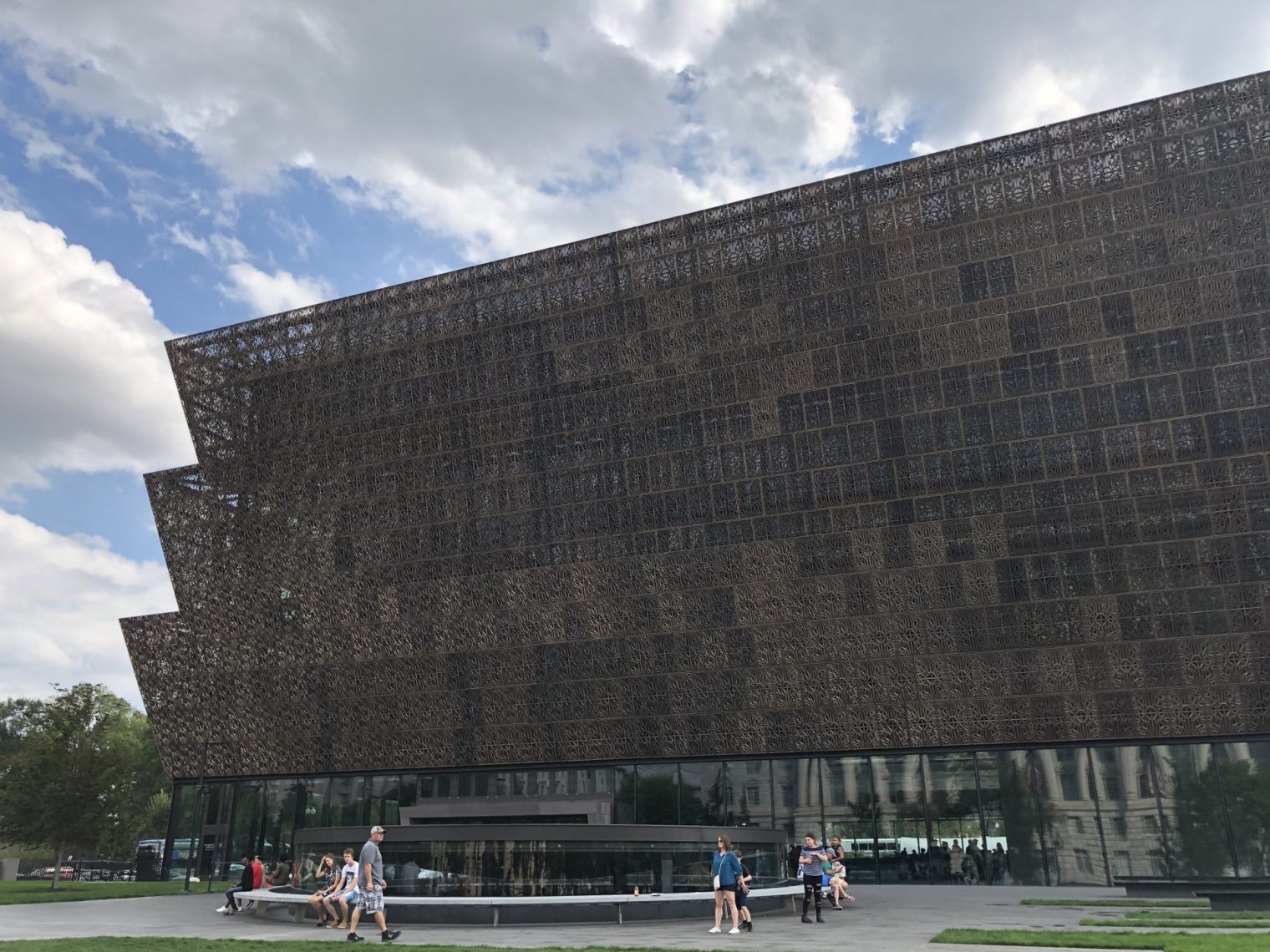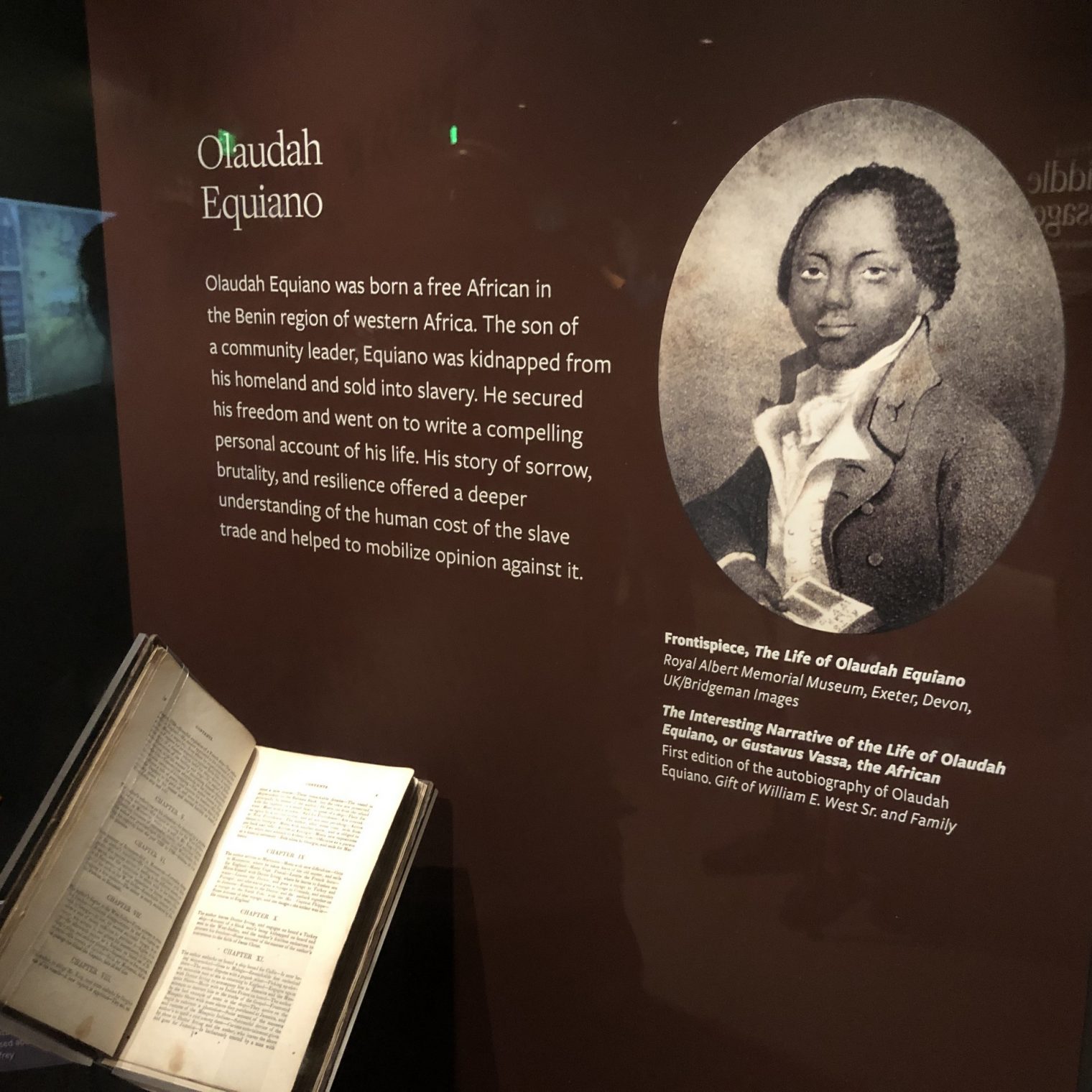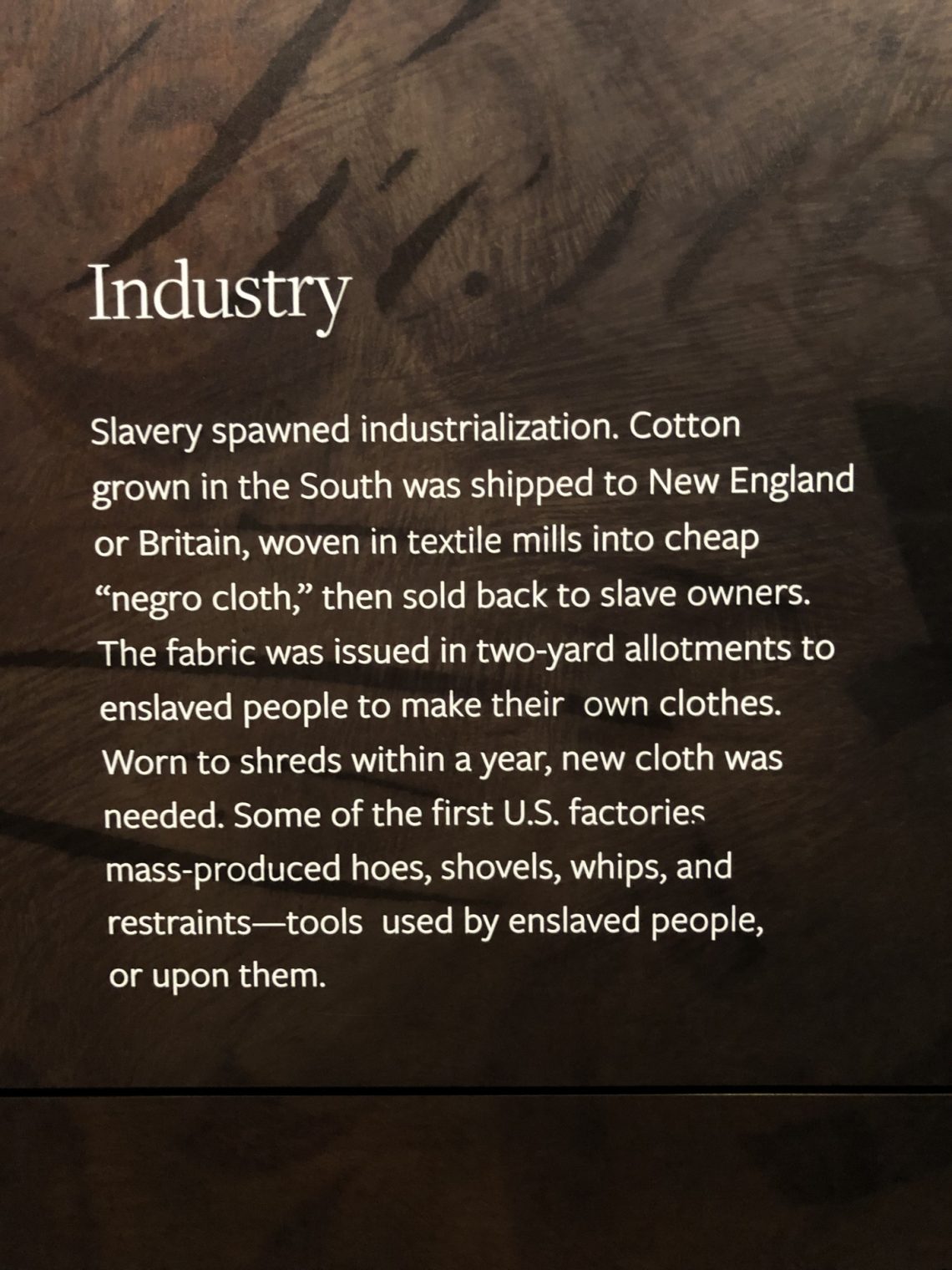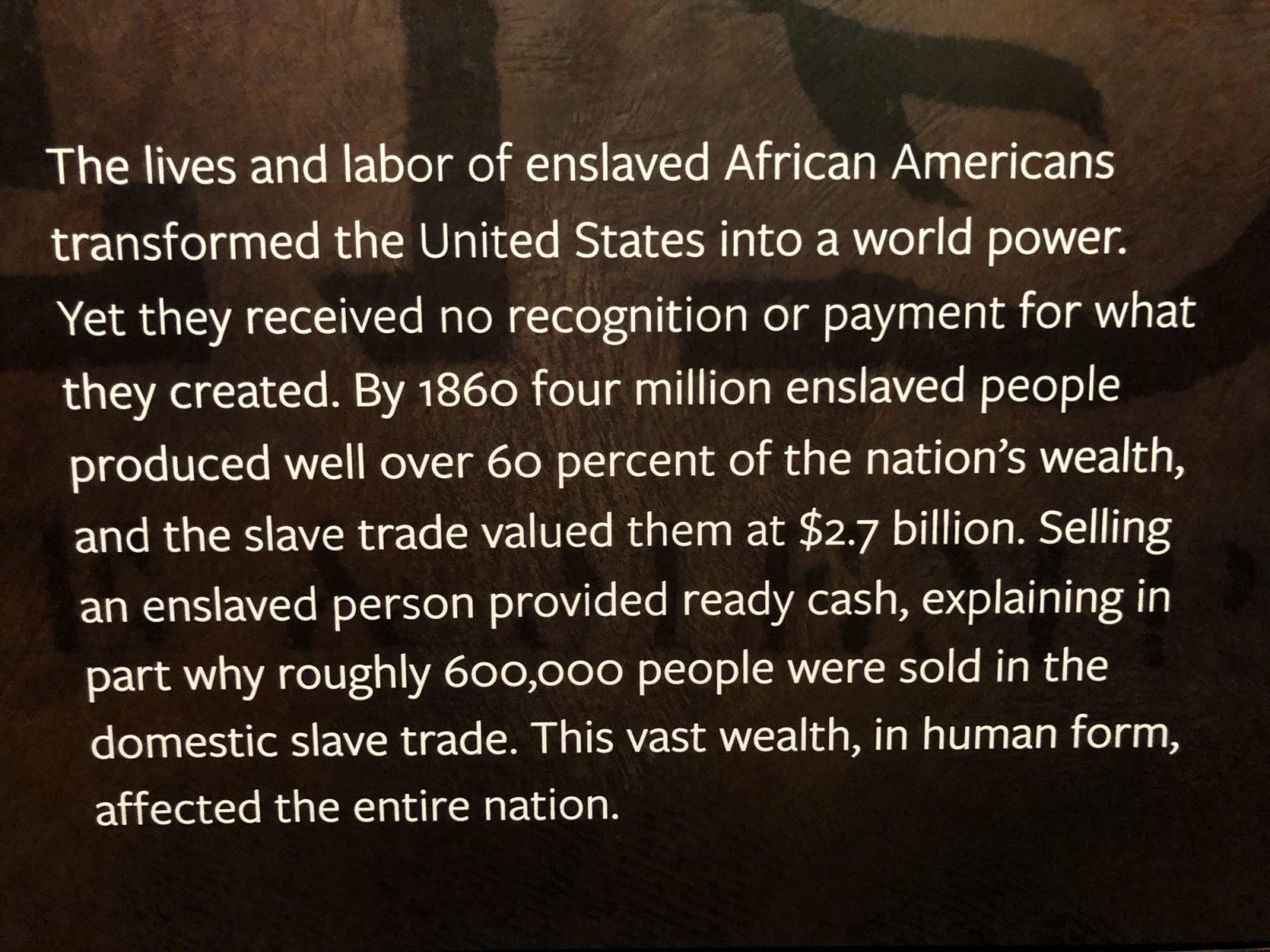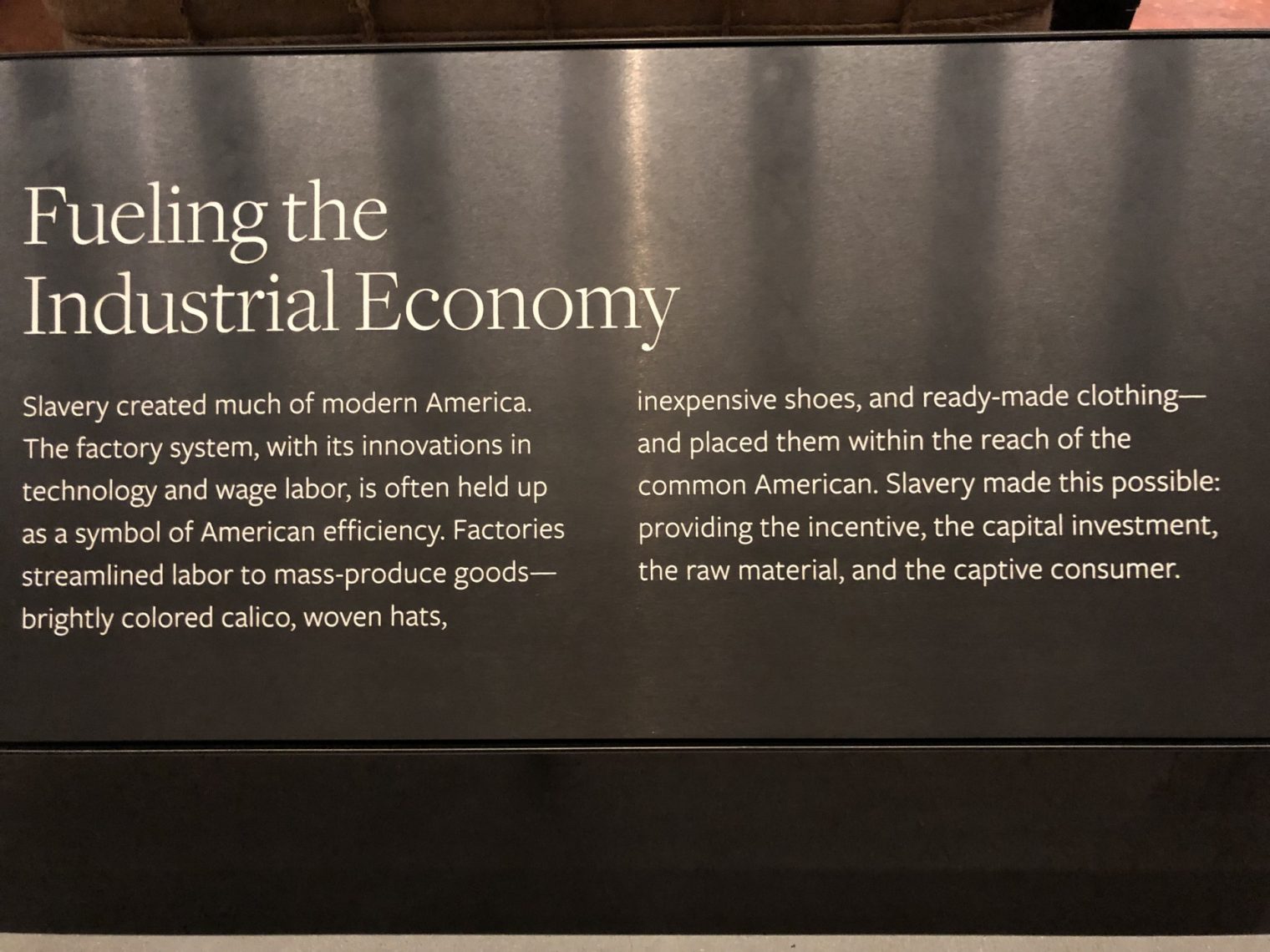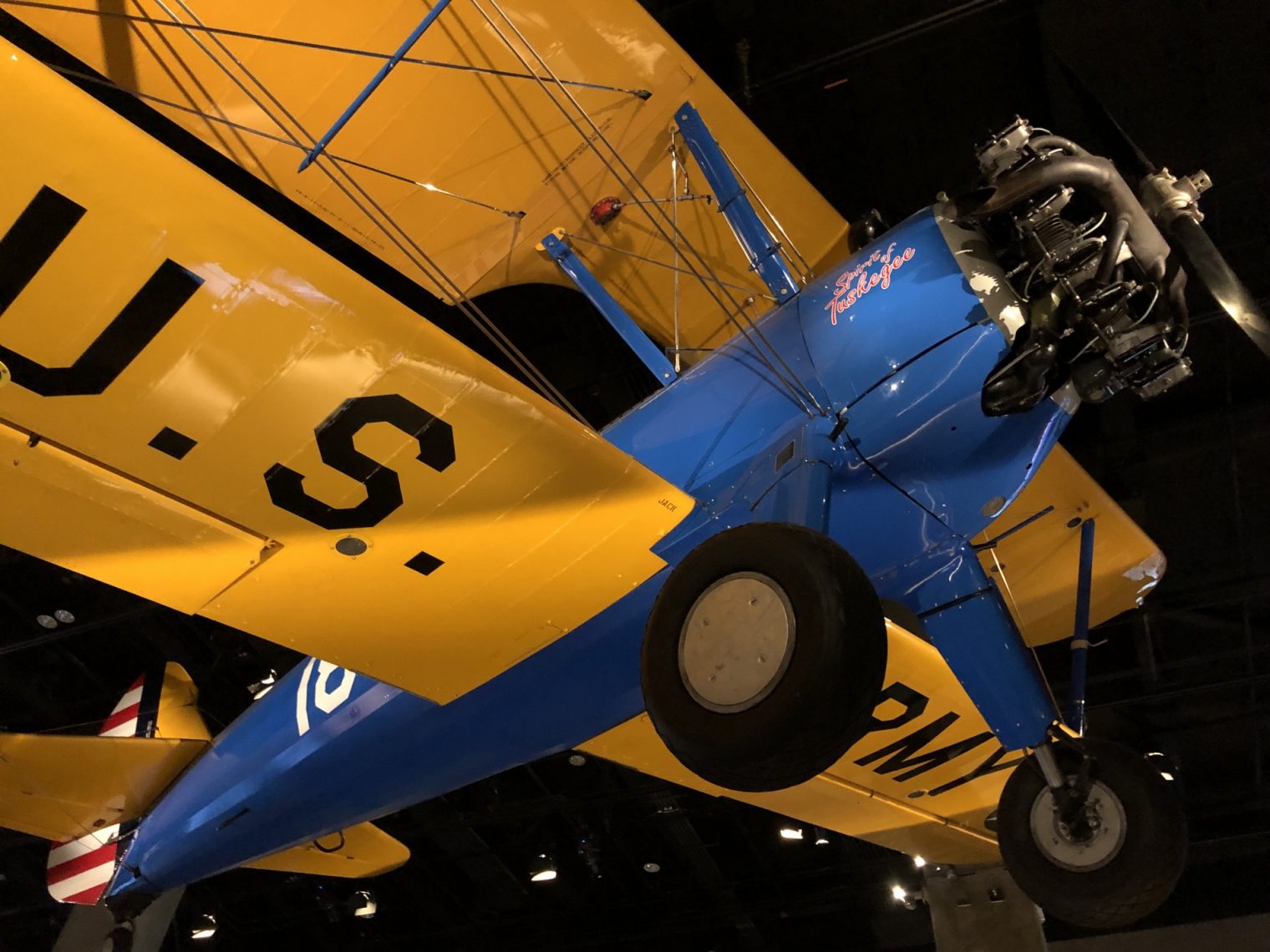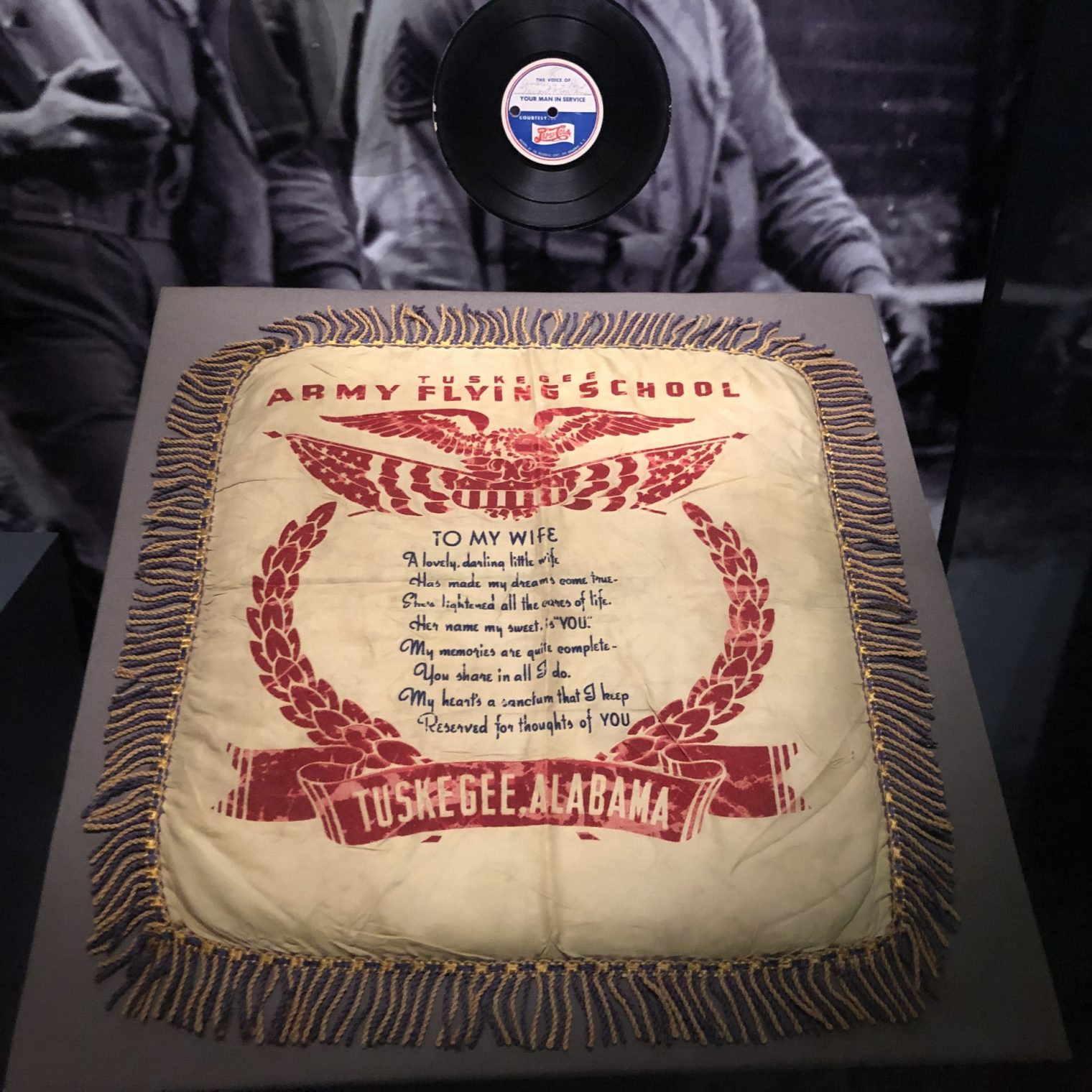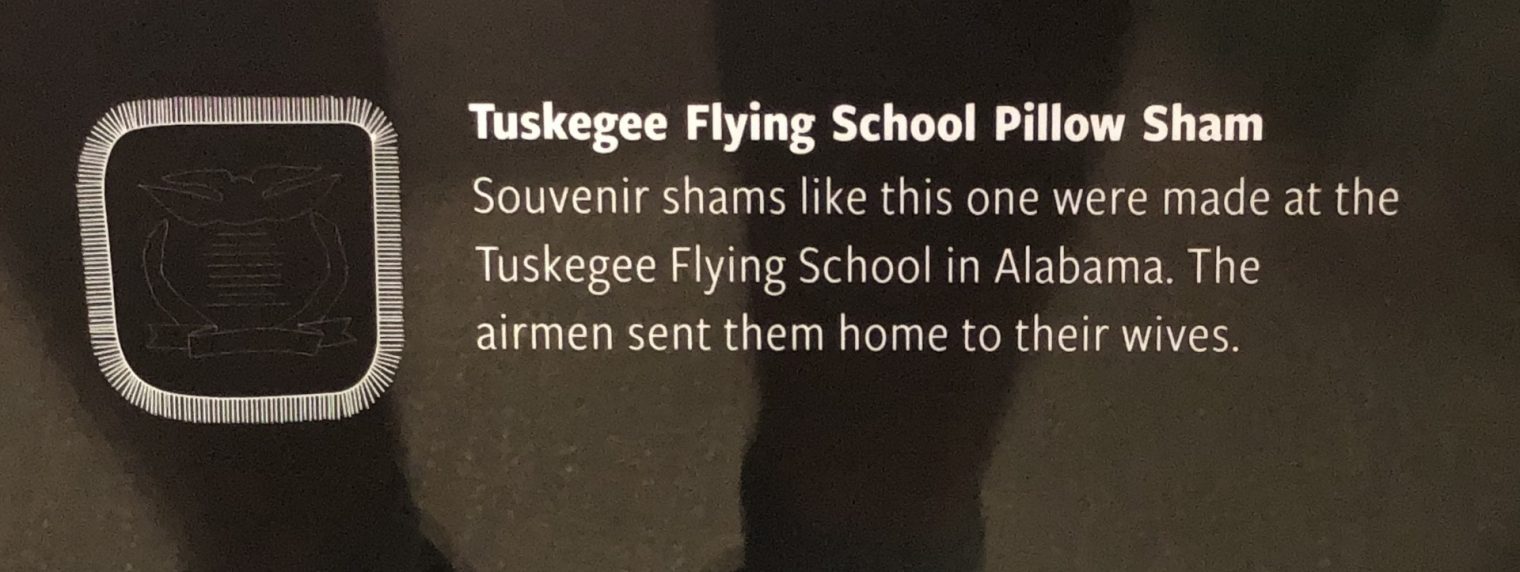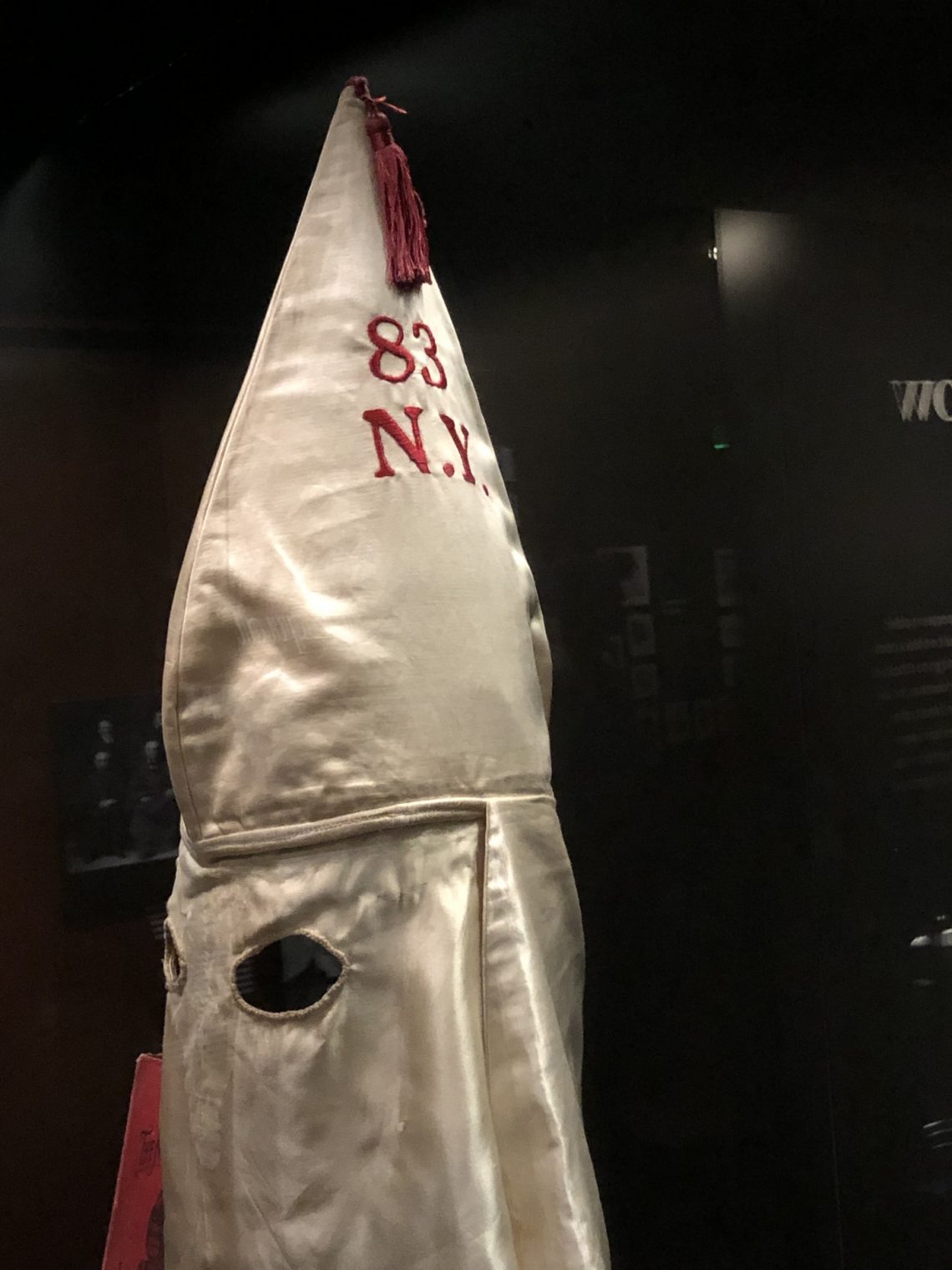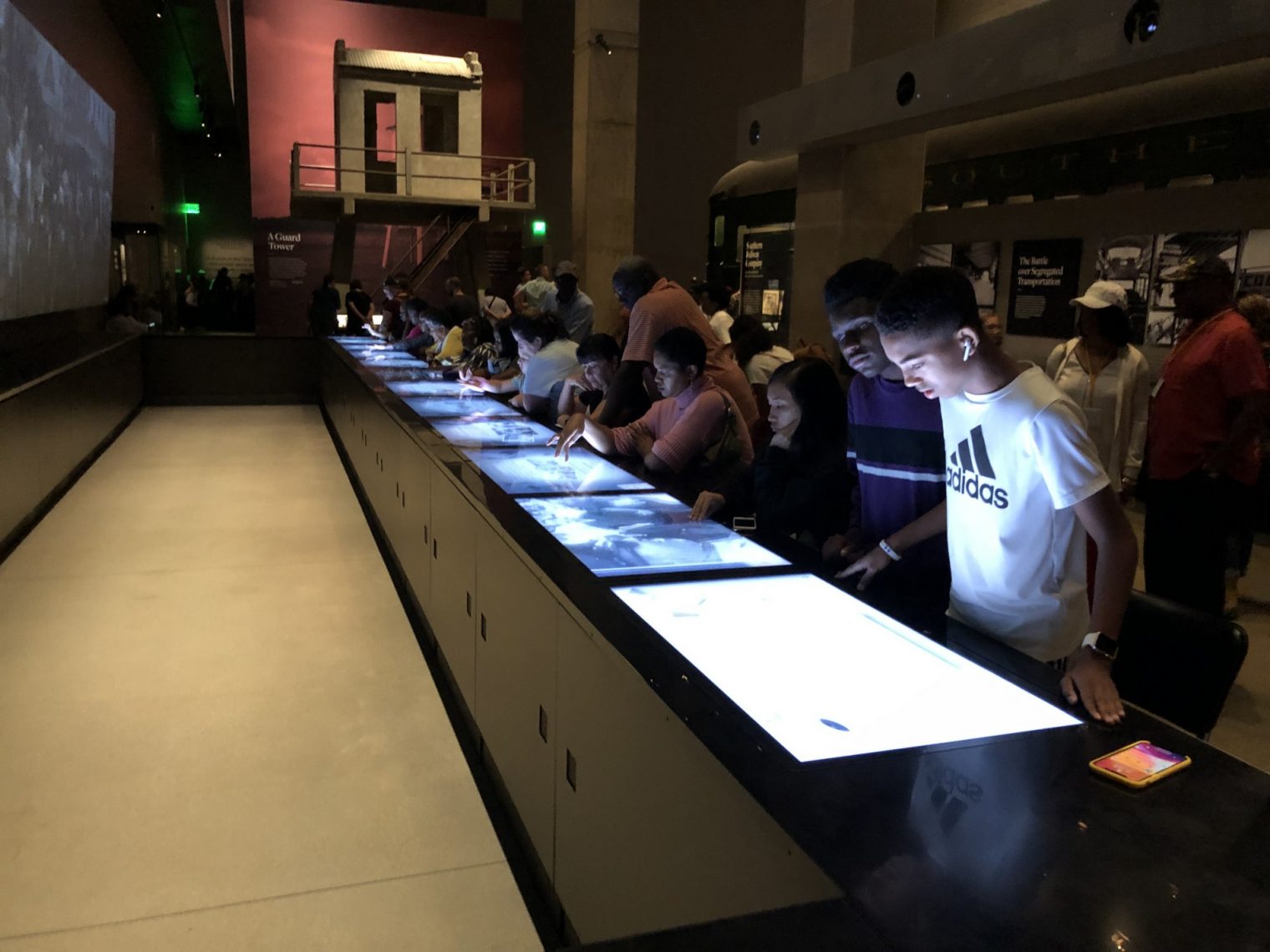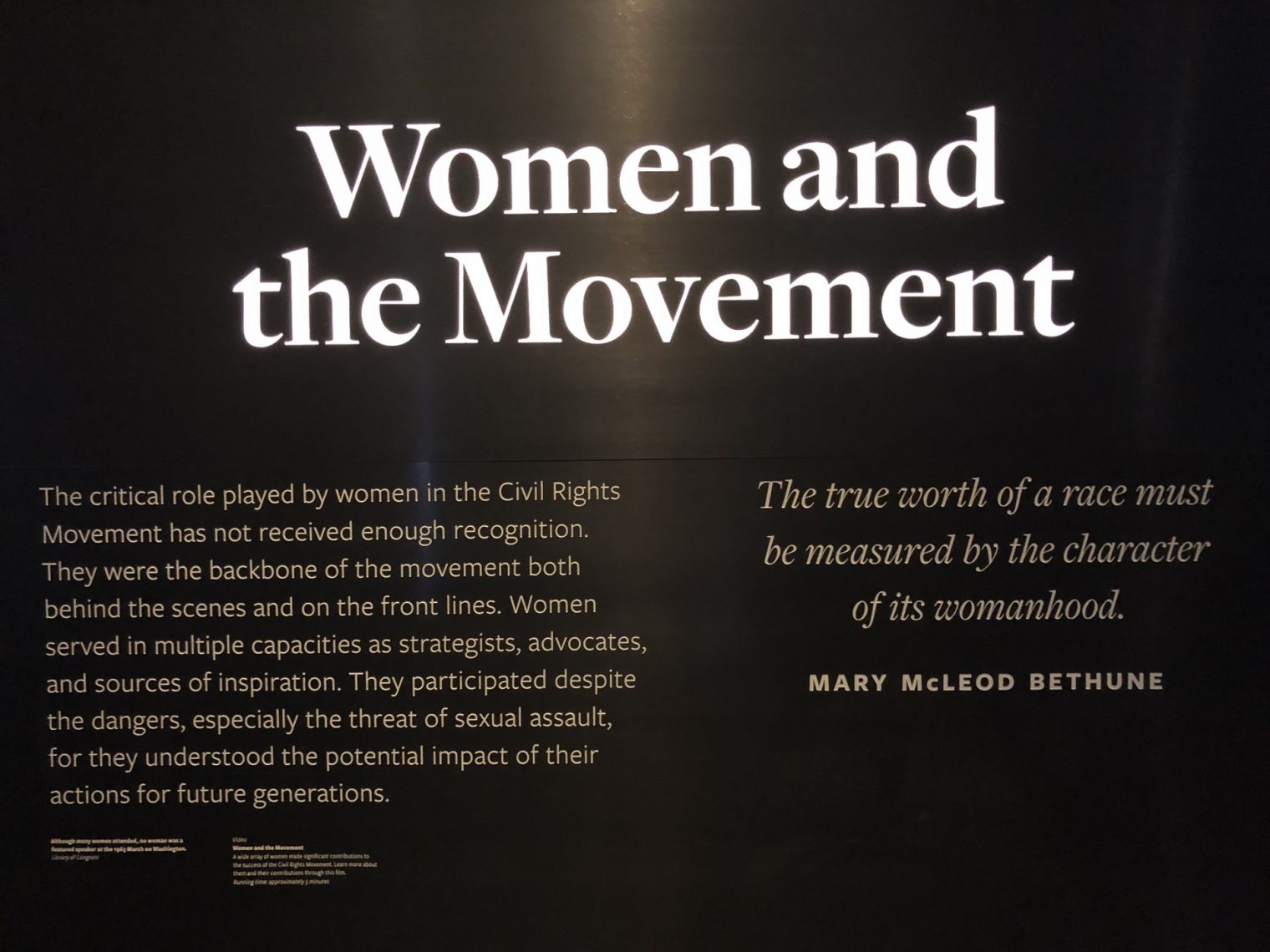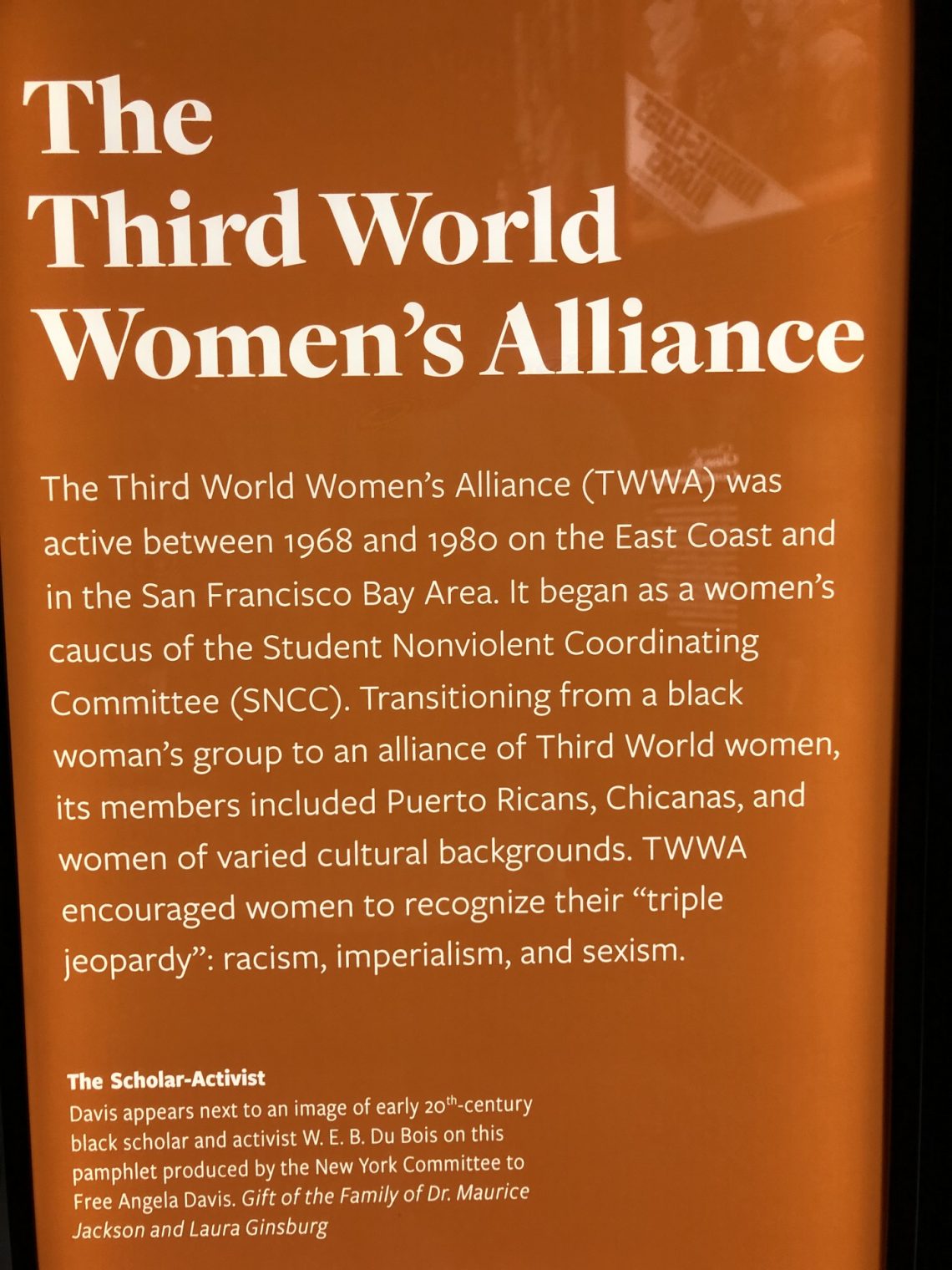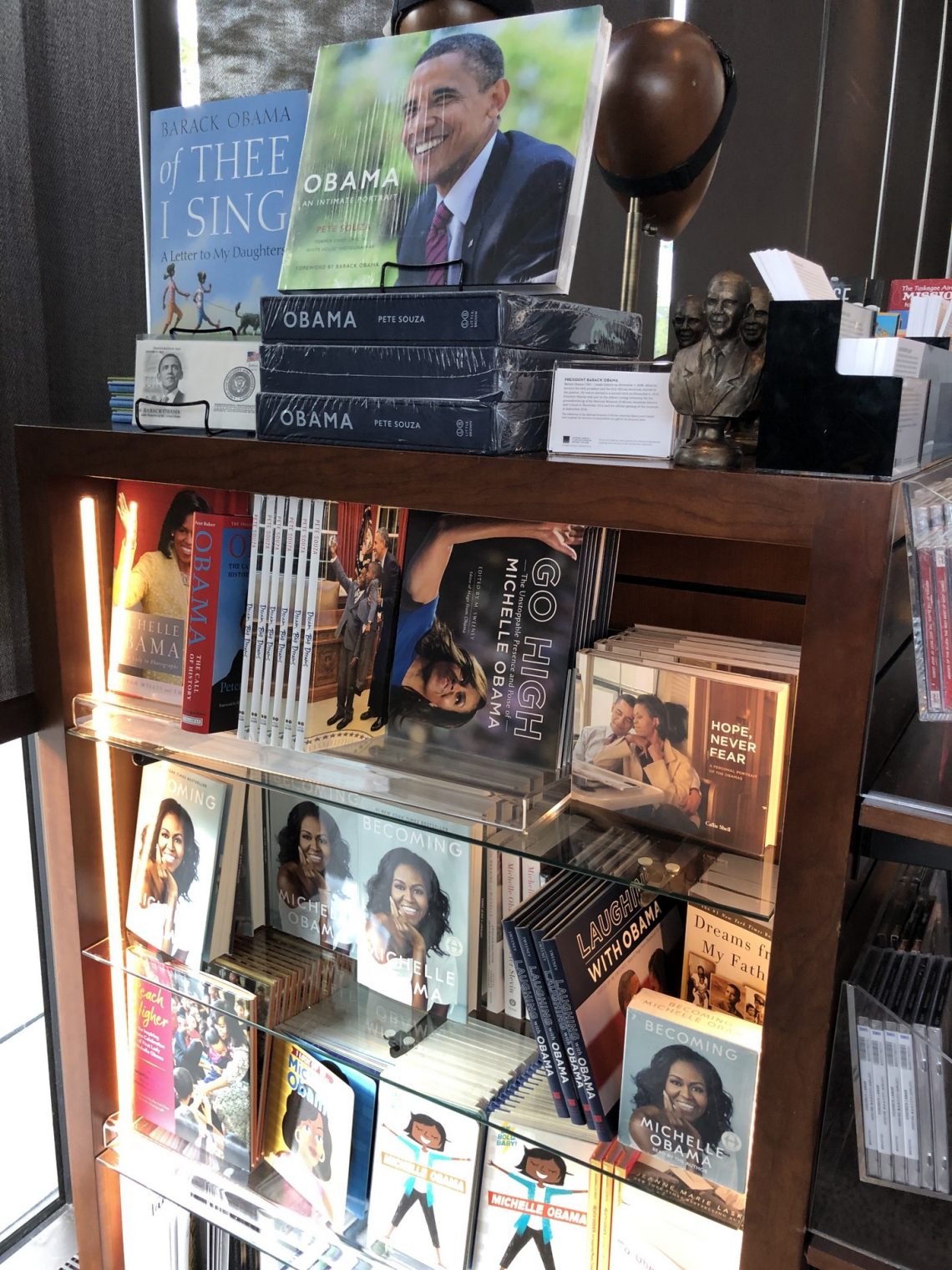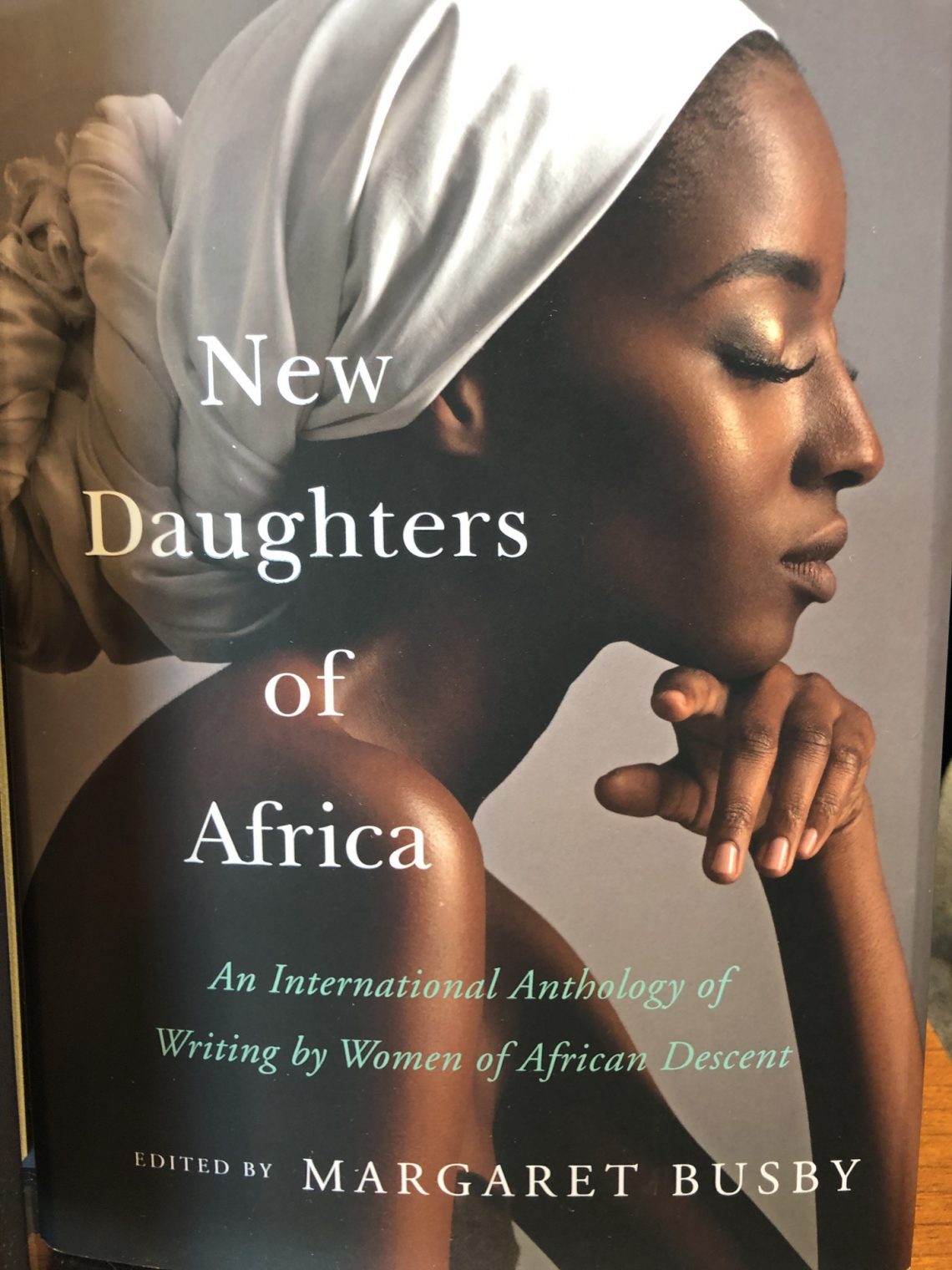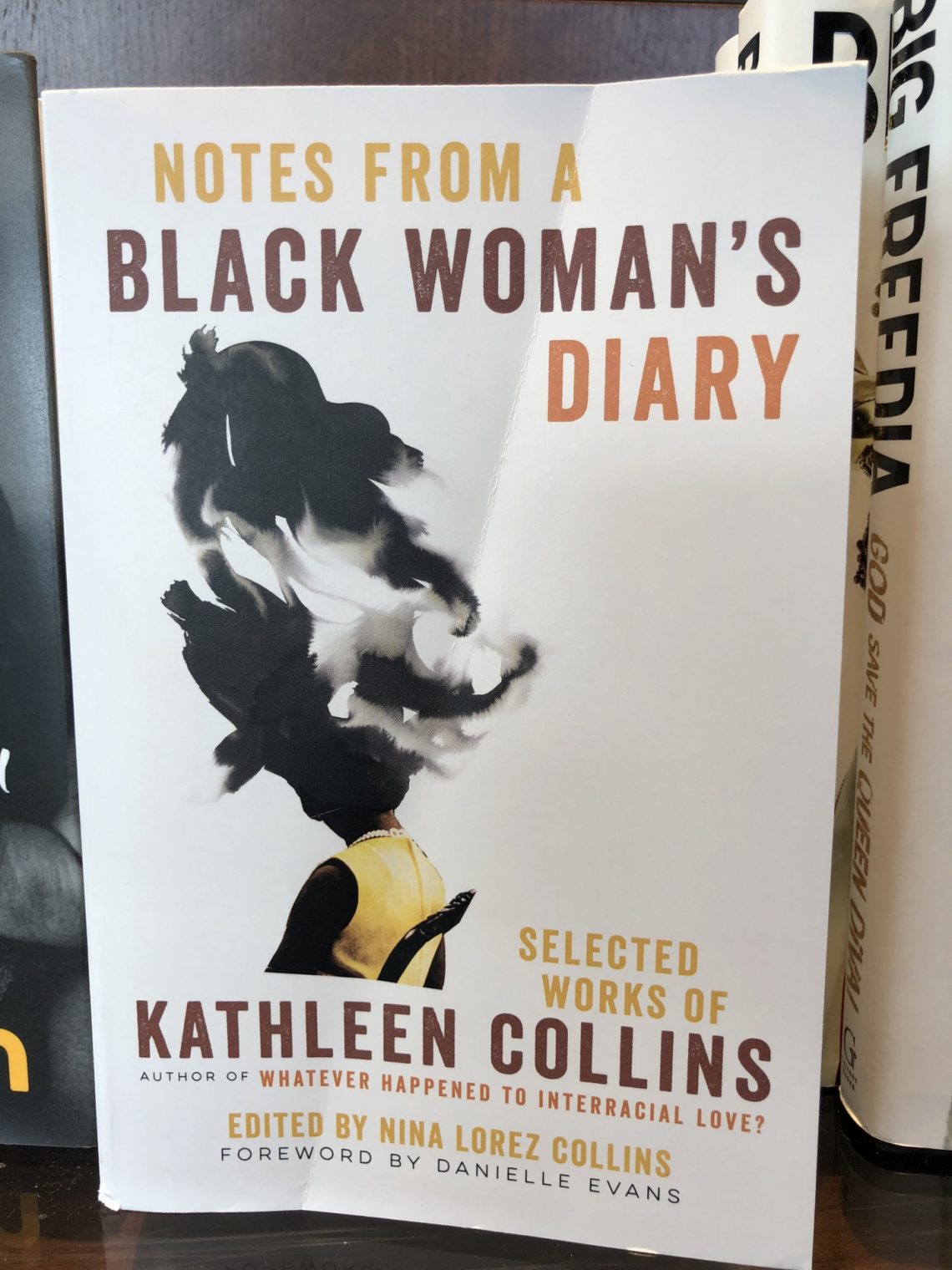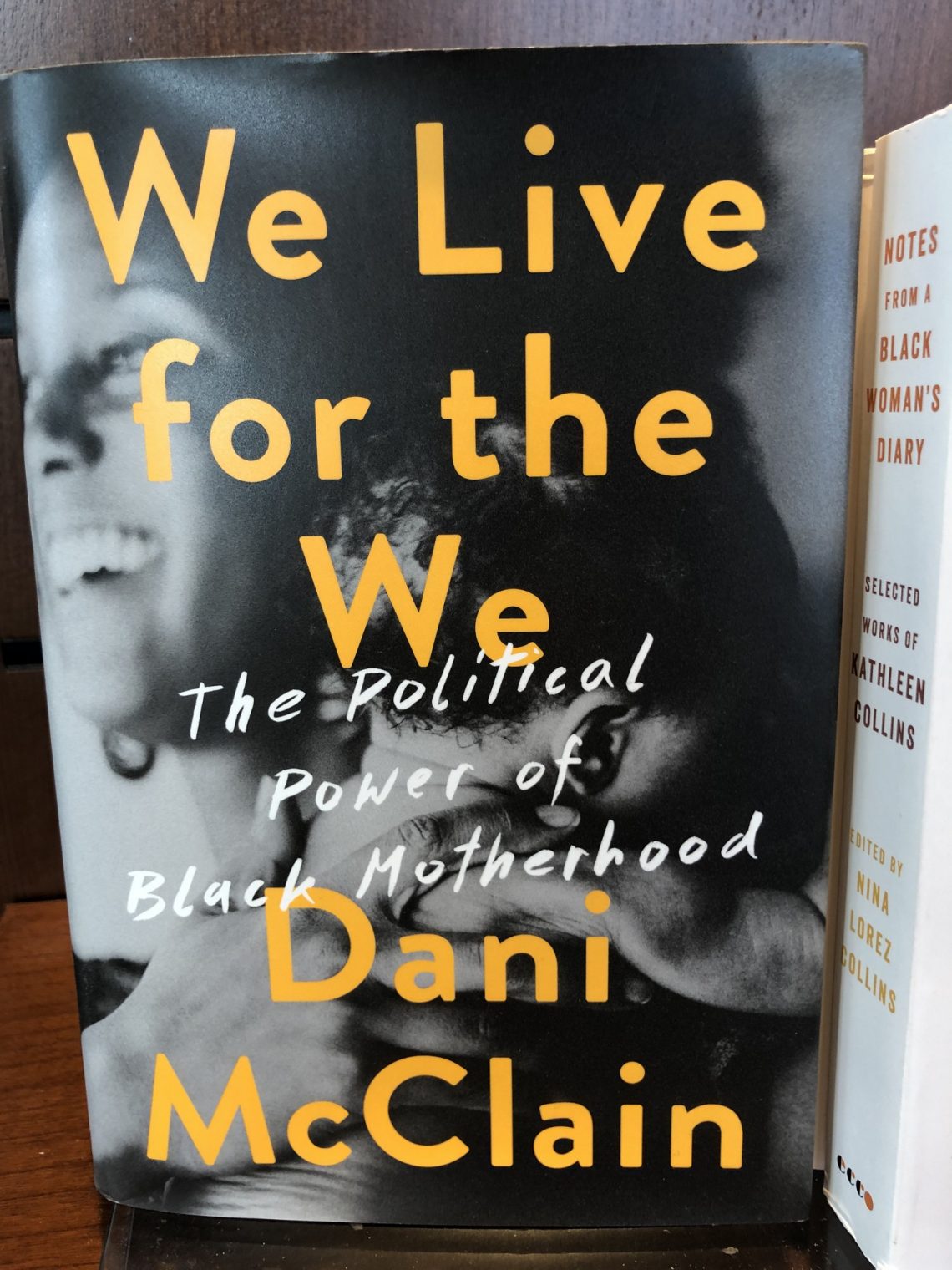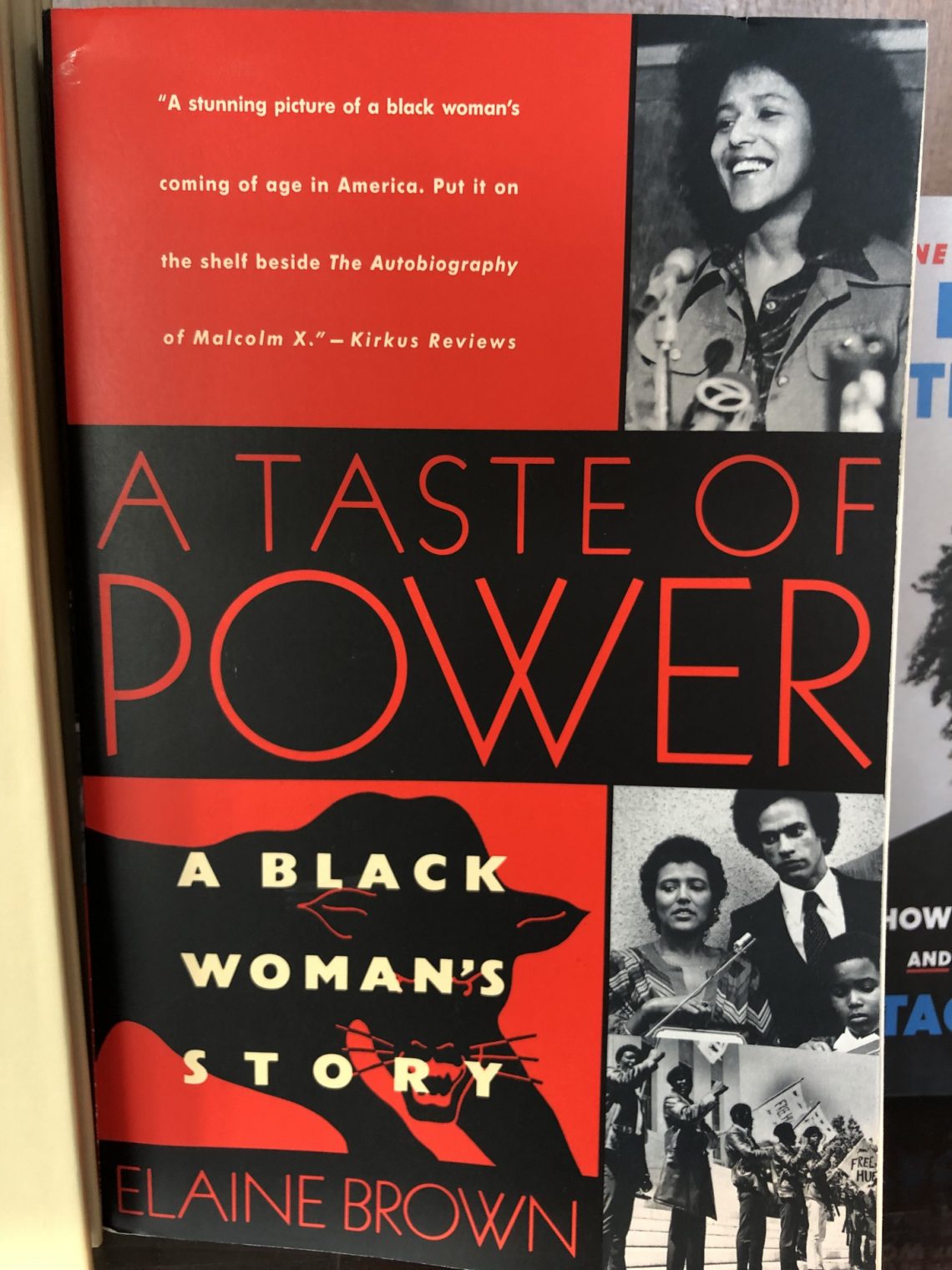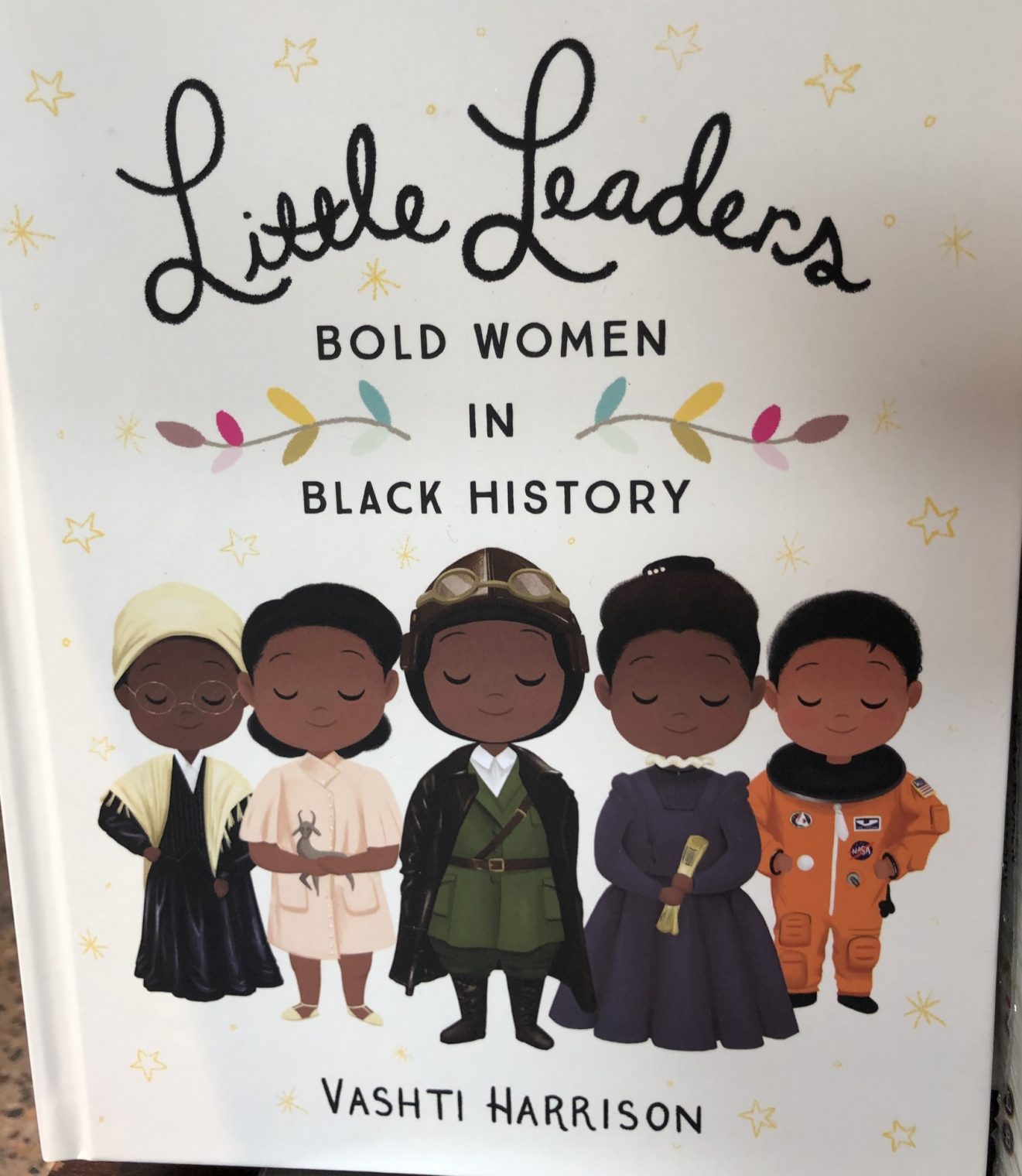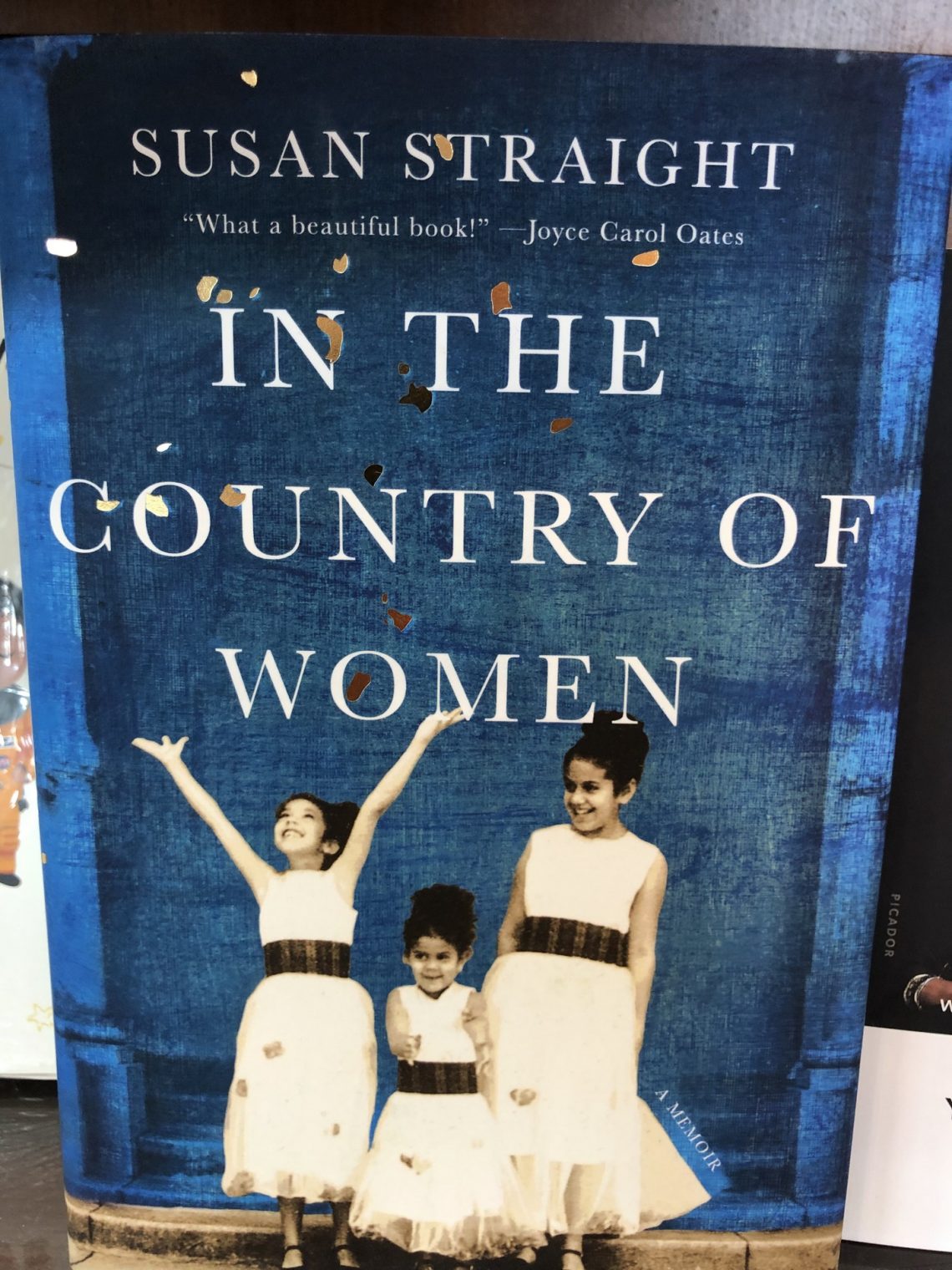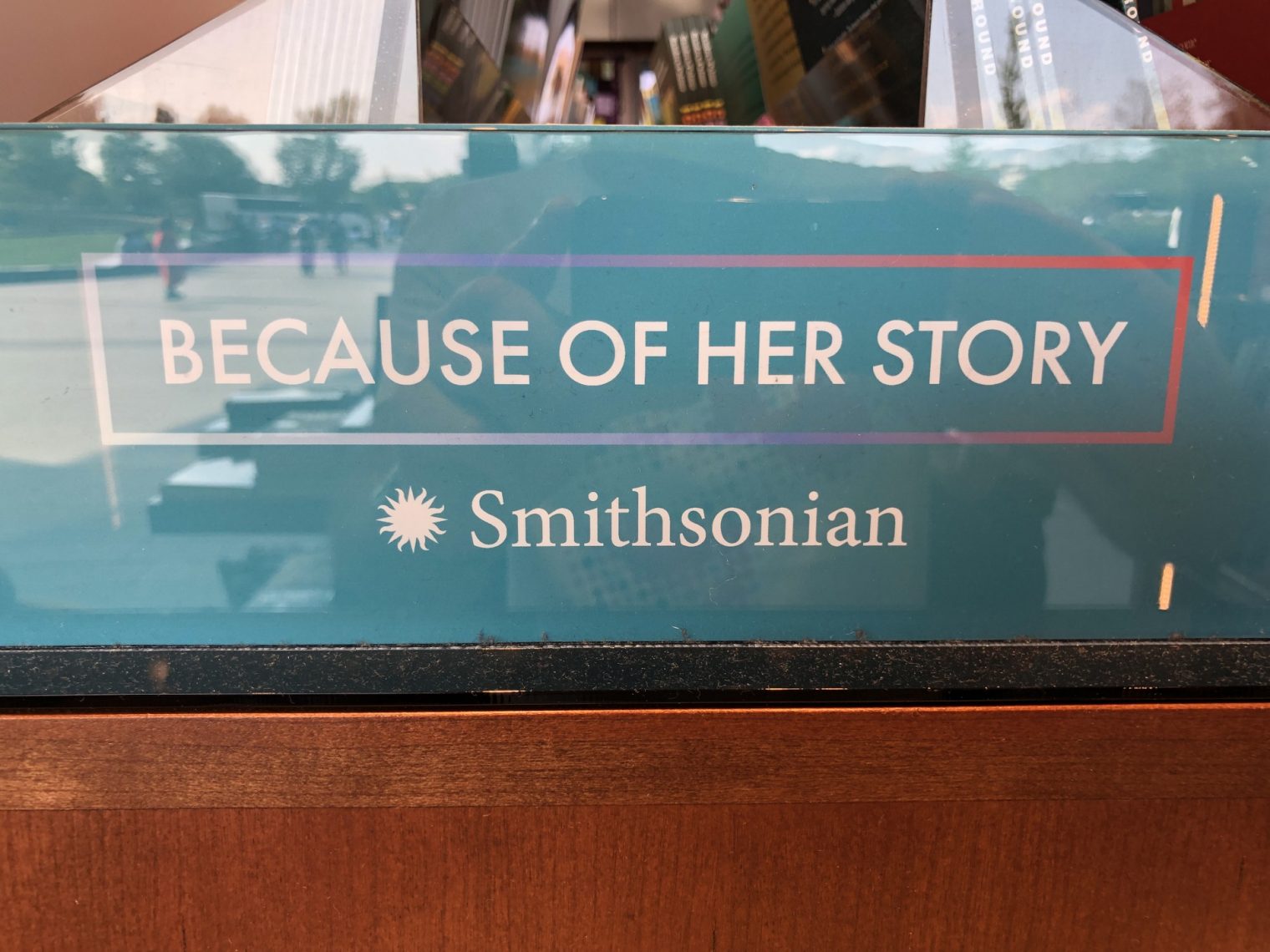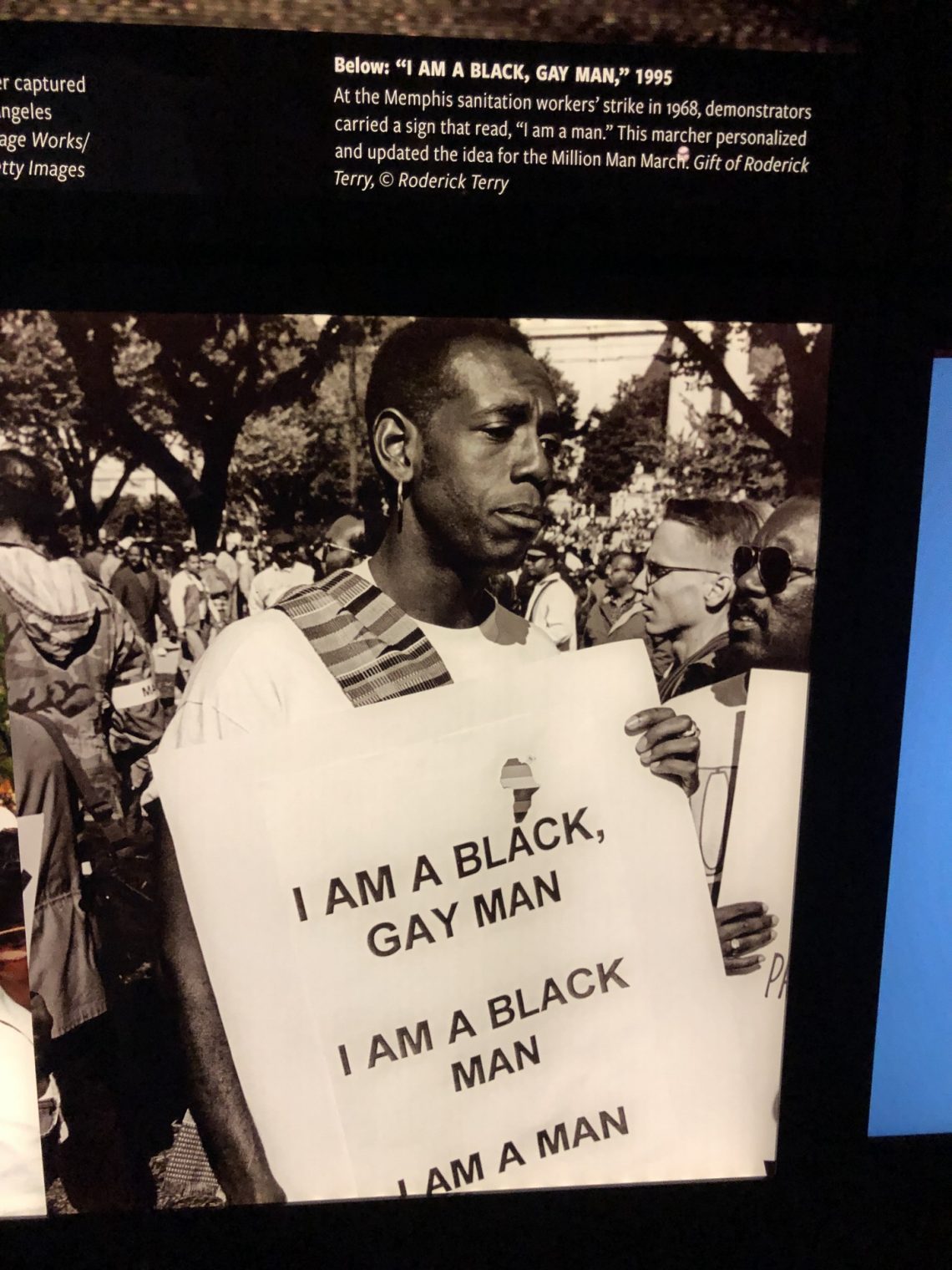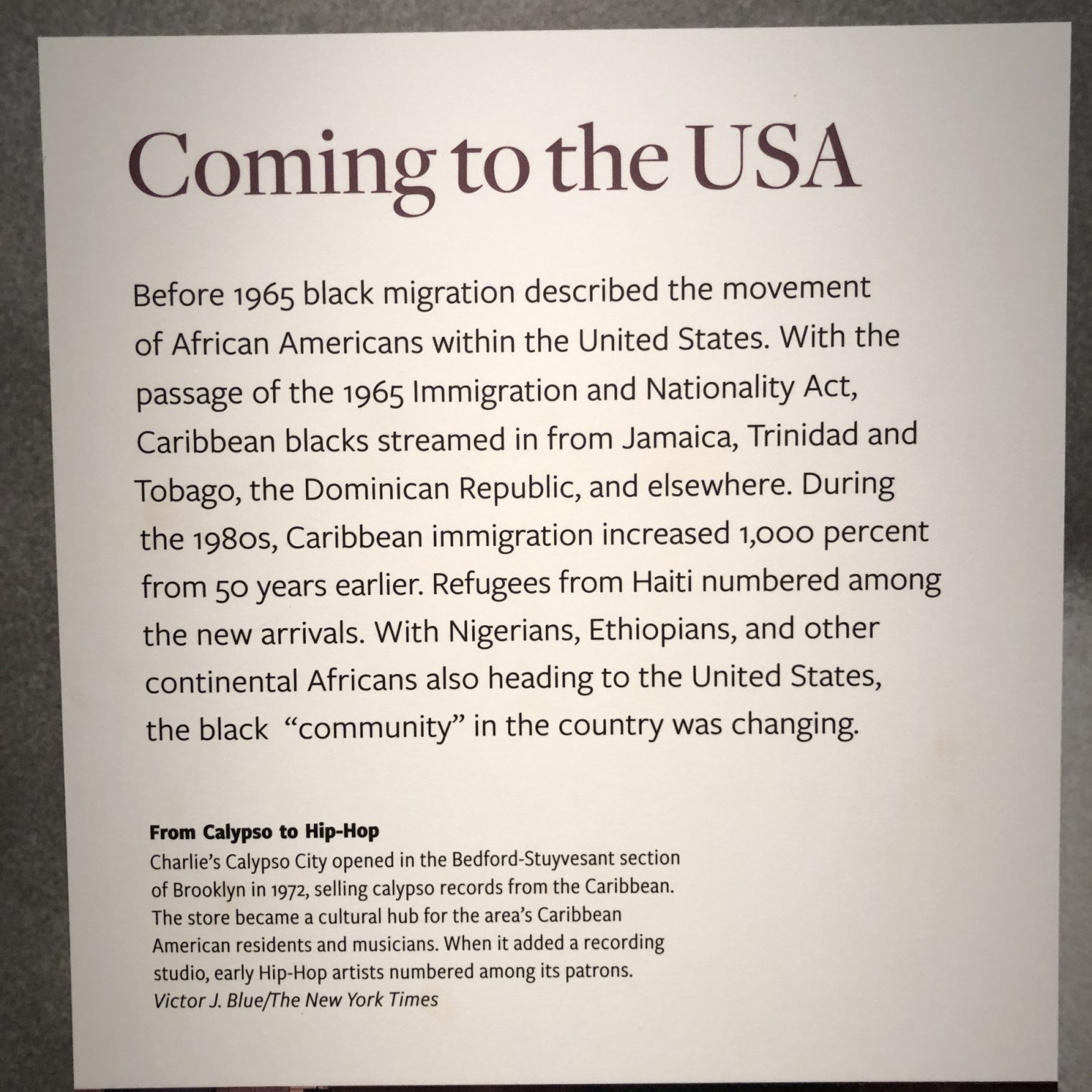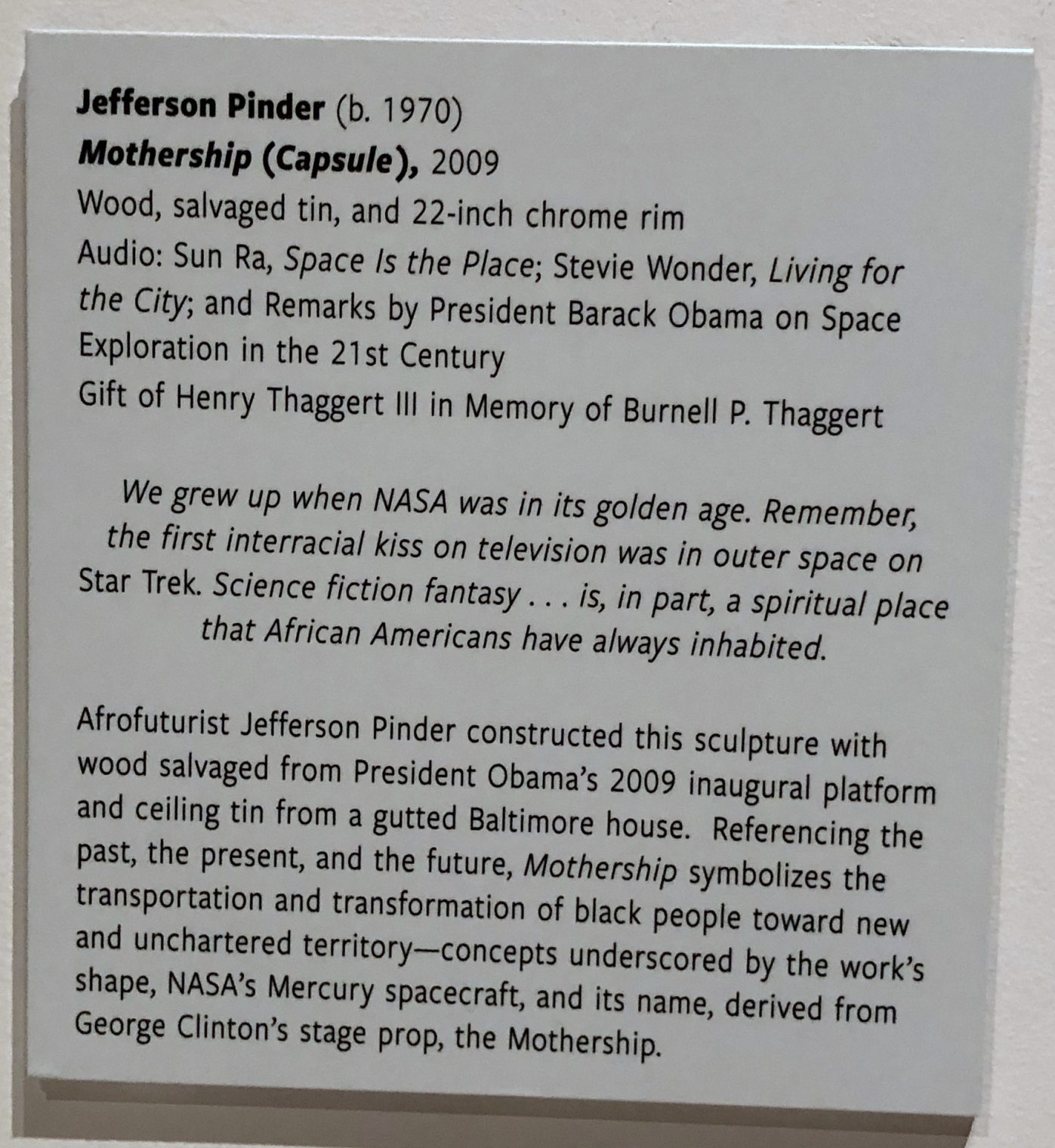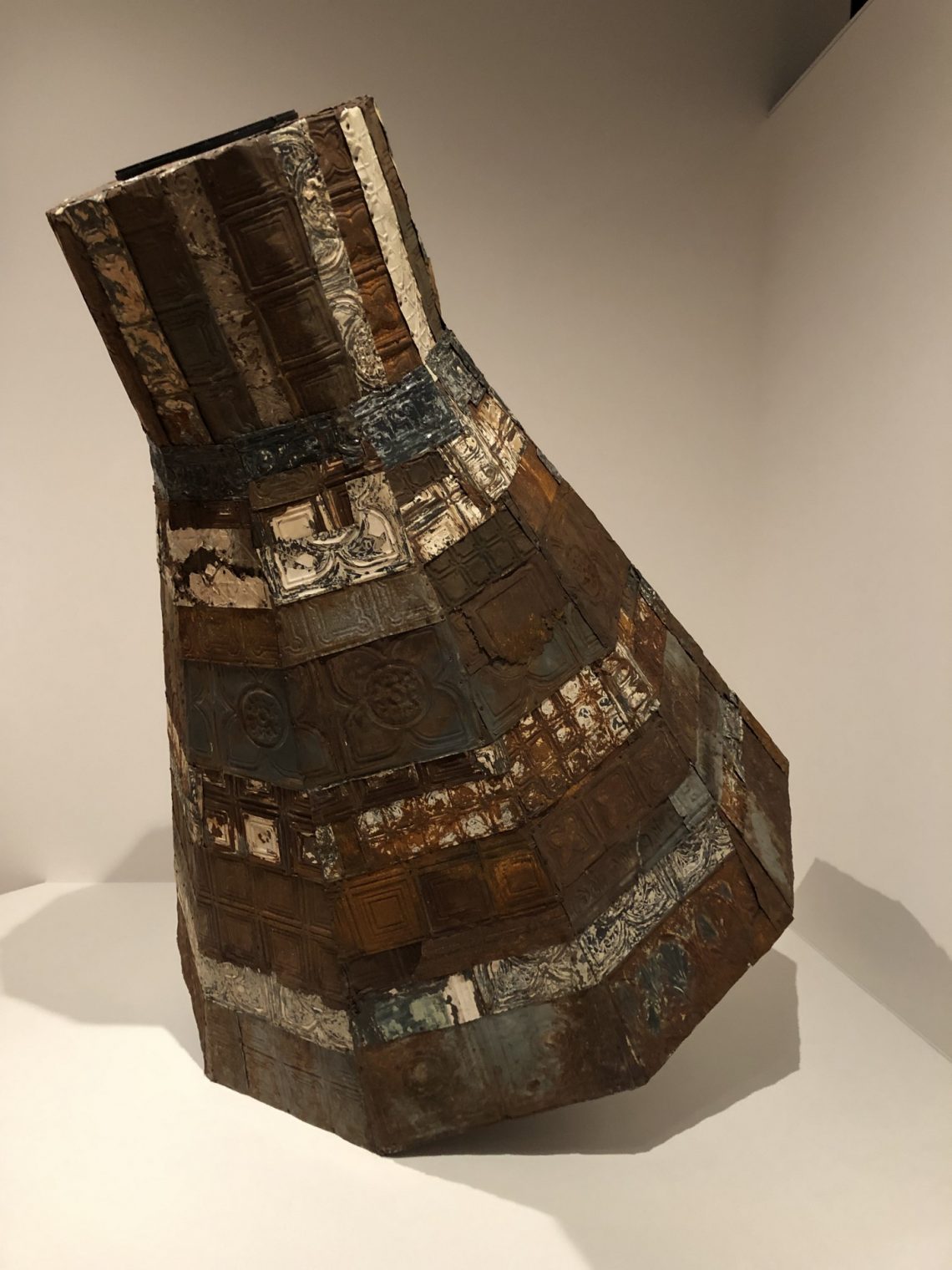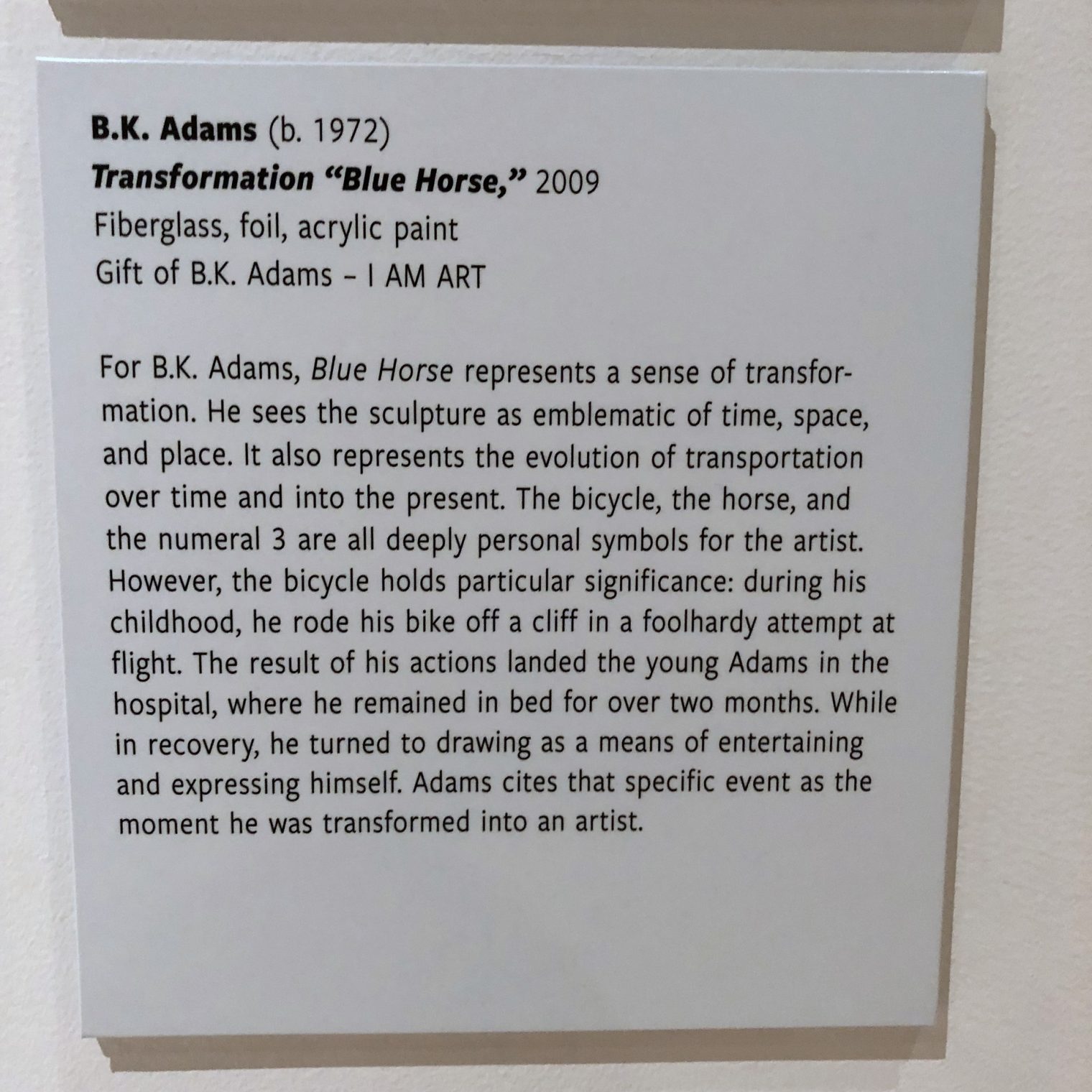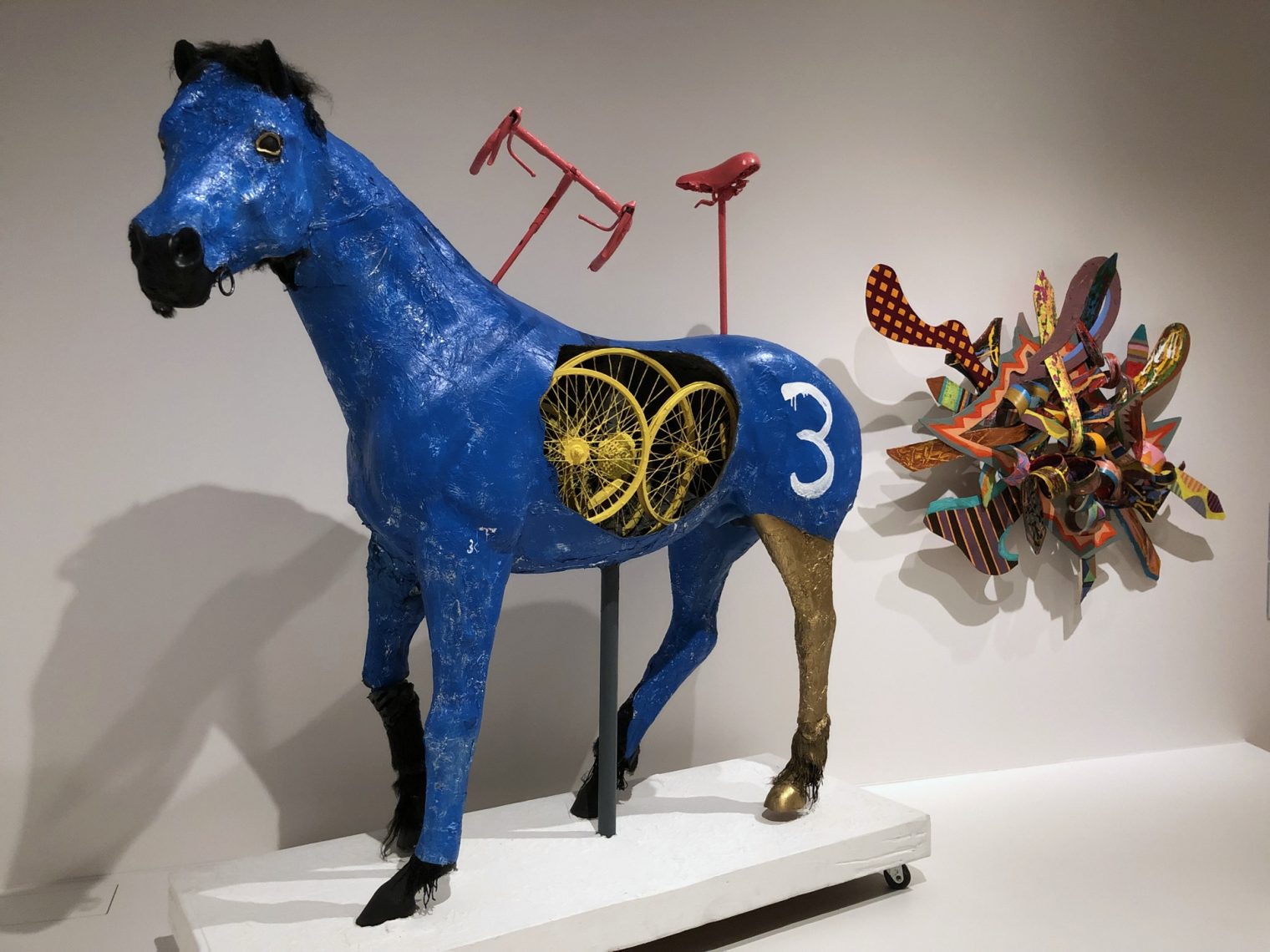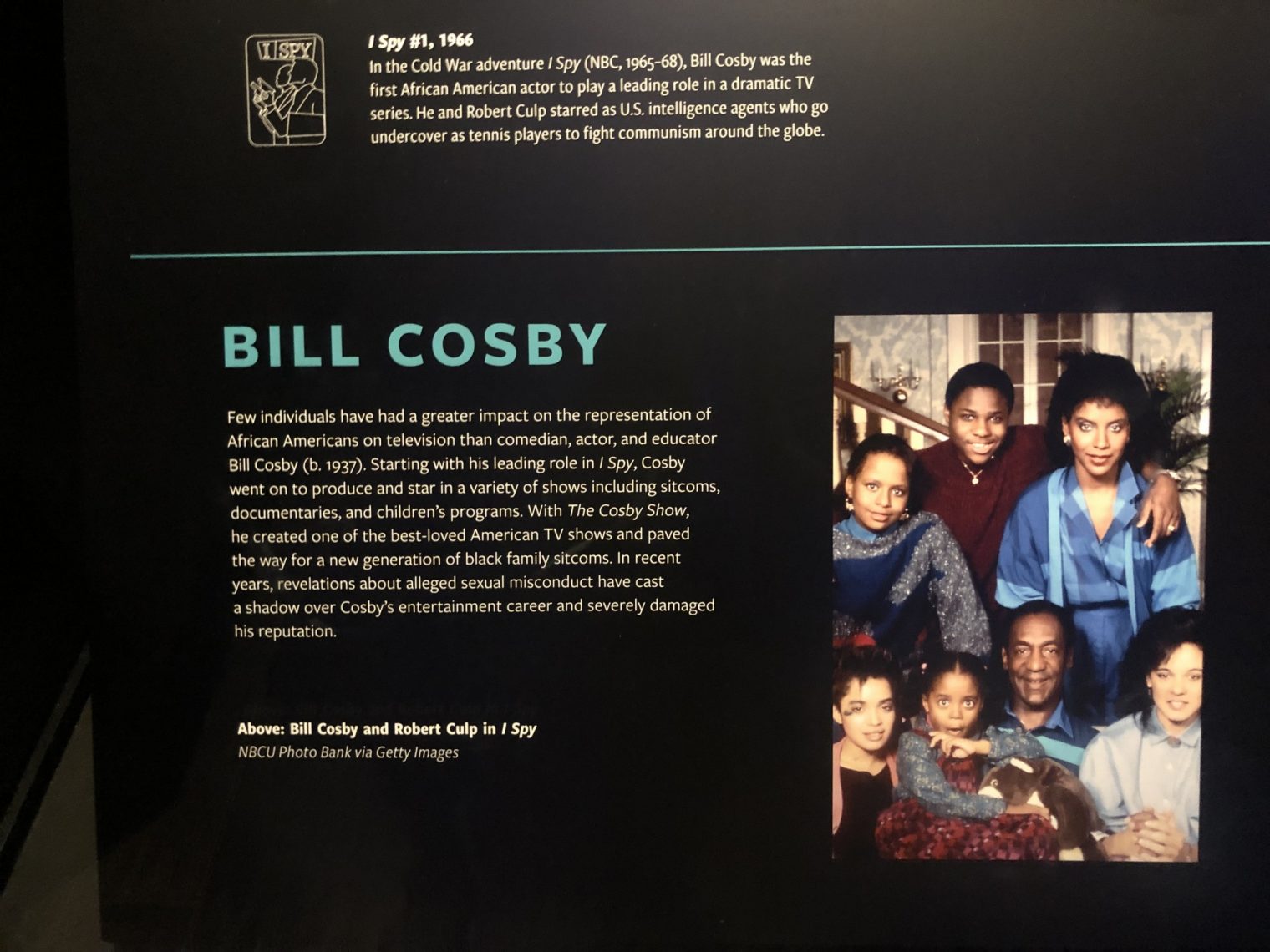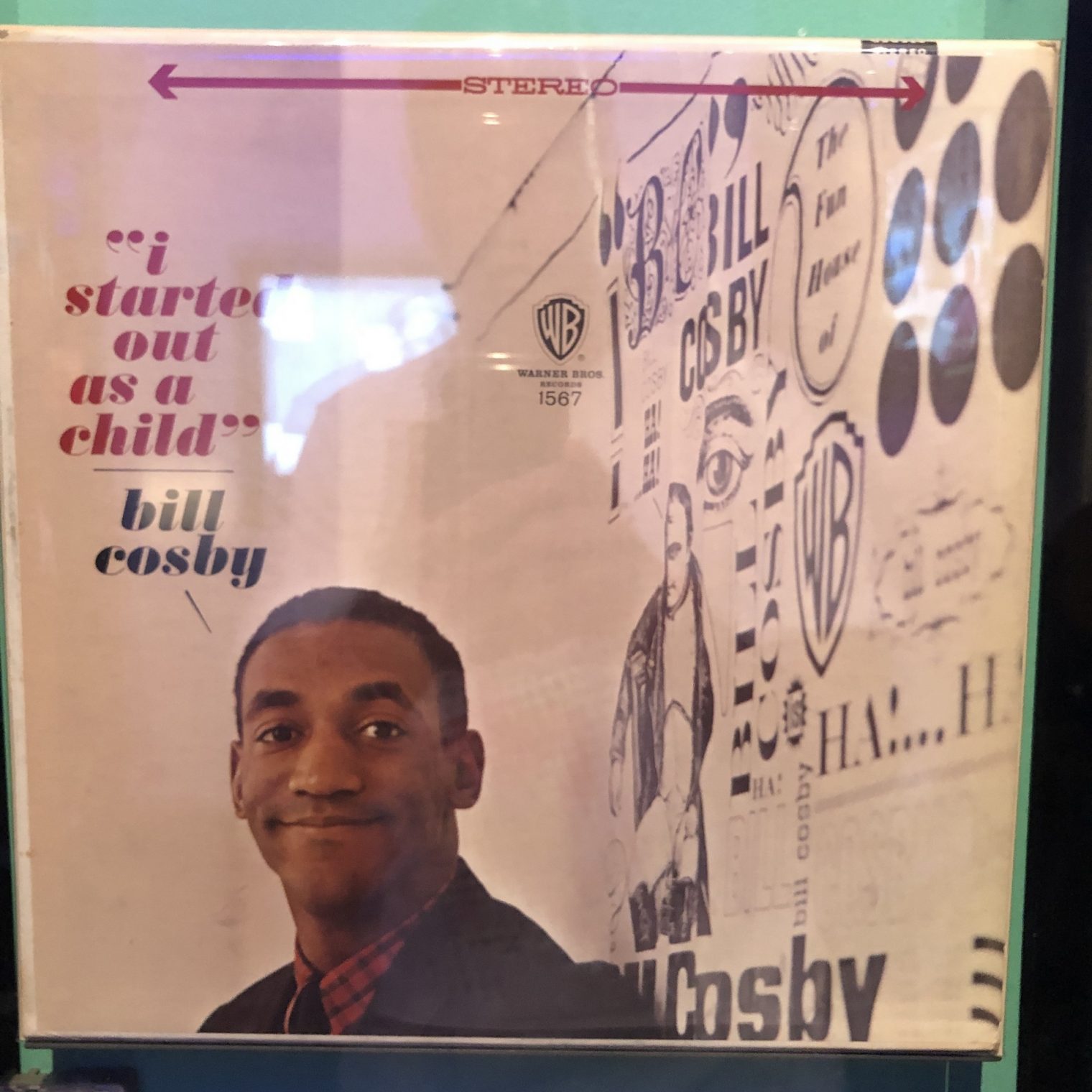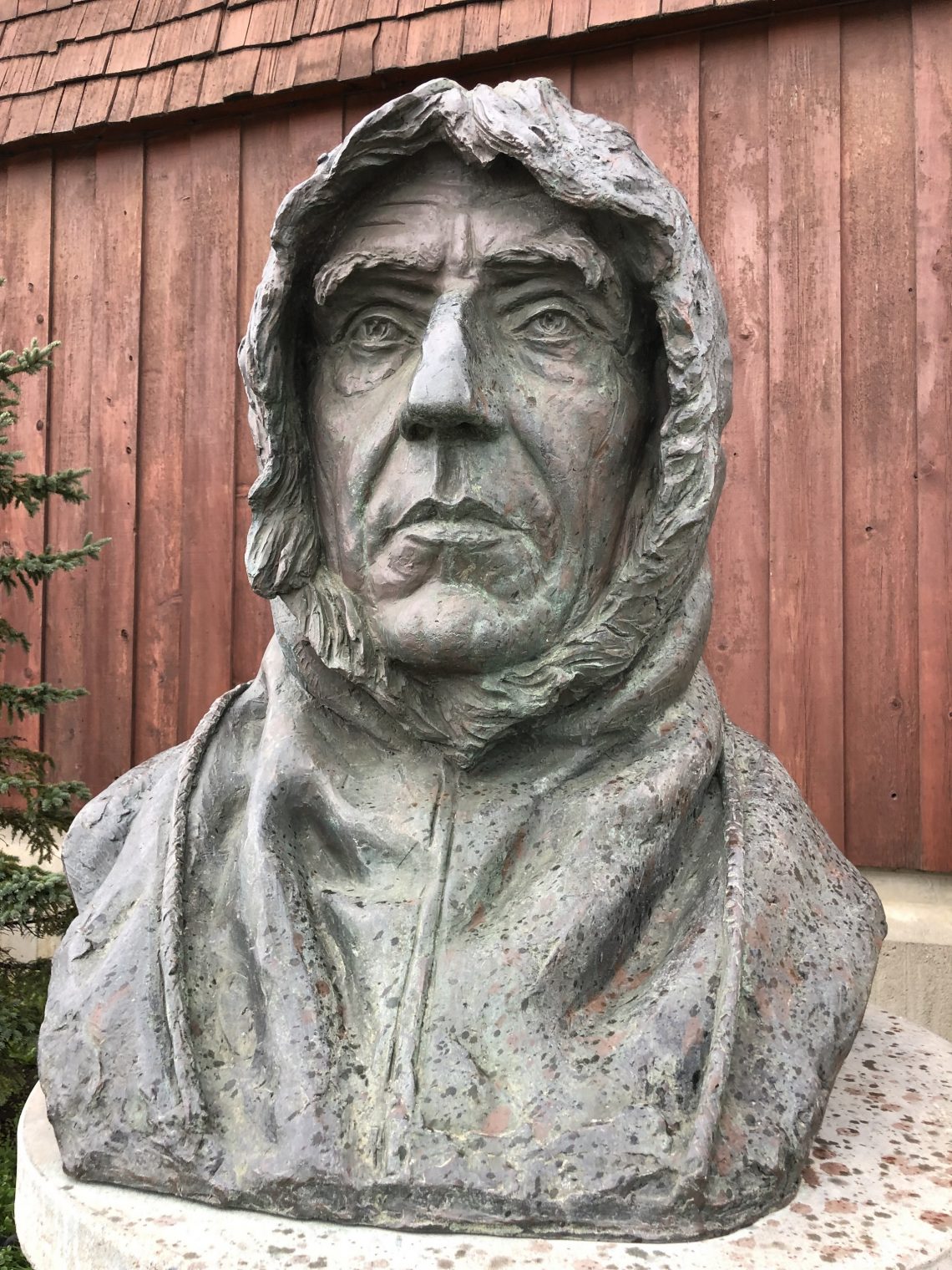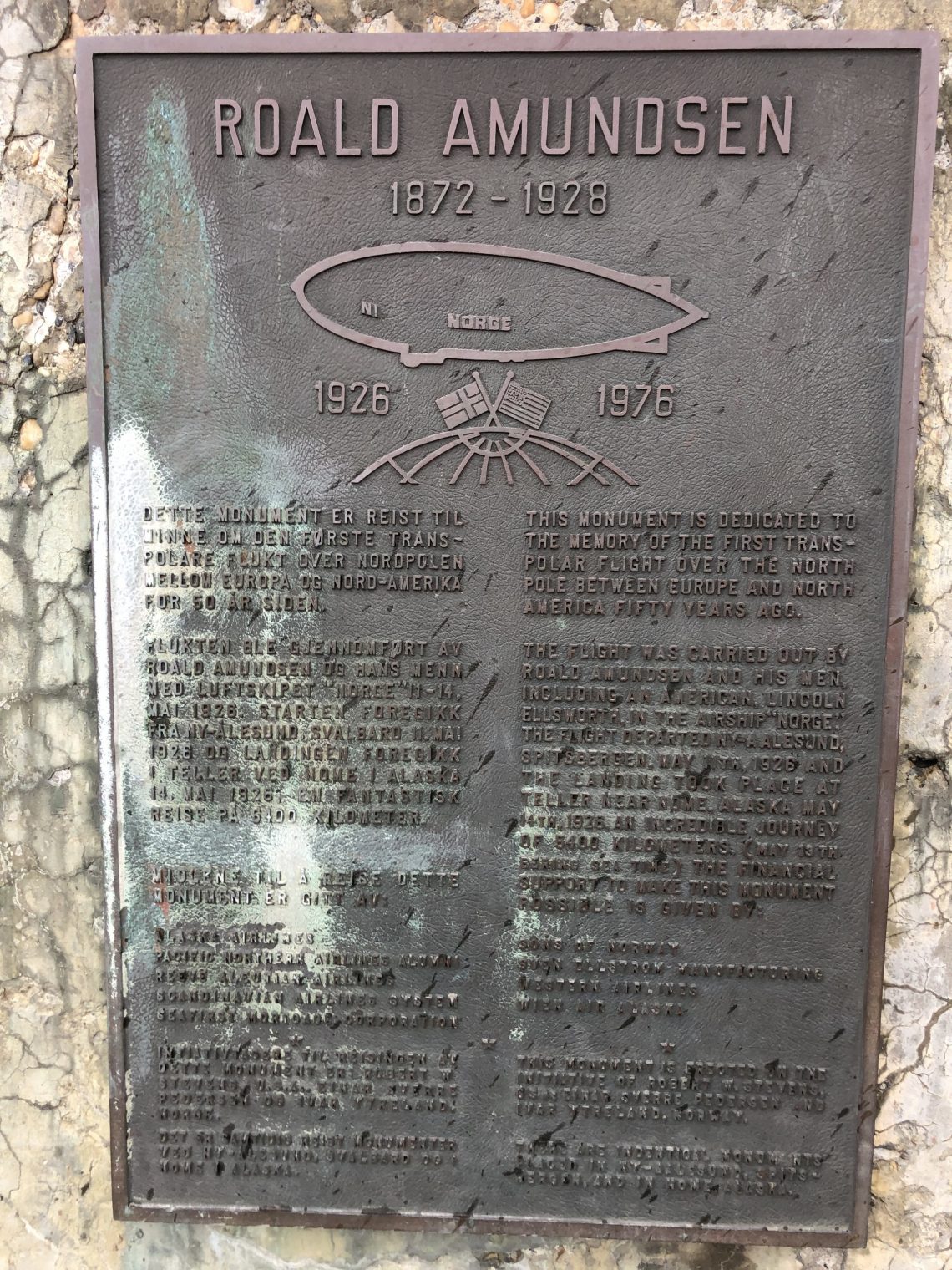National Museum of African American History and Culture
The crowds are thinning out at the Smithsonian’s National Museum of African American History and Culture. I simply showed up on a recent Sunday afternoon and was able to walk in (in theory this is possible only on weekdays in the off season).
The most prominent funders of the museum are white do-gooders:
And they are challenging stereotypes by serving fried chicken and collard greens in the cafeteria:
Slavery is presented as something that white Europeans did to African blacks. This sign regarding Olaudah Equiano is about as close as the museum ever gets to noting that black Africans were predominantly captured and sold into slavery by fellow black Africans and/or Arabs.
The museum confidently presents an economic history in which black labor is the basis of American wealth:
The Smithsonian does not explain how it is possible that enslaved blacks generated most American wealth and yet the South was much poorer than the North, to the point that it lost a war where the defense had a big advantage.
Suppose that the $250 million number for the value of cotton produced by slaves in 1861. A guesstimate of U.S. GDP at the time was $4.6 billion (source, in which it is noted that the $8.3 billion number for 1869 might be good, but earlier numbers are extrapolations).
Also, if slaves guarantee long-term wealth, why aren’t the other parts of the world that had a lot of slaves in the mid-19th century very rich today?
Most of the exhibits consist of “artifact plus explanatory written sign” that would have been familiar to a visitor to the British Museum circa 1759. And the collection is actually kind of short on artifacts, so much of the experience becomes reading while standing in a crowd. Will this be compelling for visitors in 25 years after everyone has grown up wearing AR glasses?
That said, there are some cool artifacts. A Stearman open-cockpit biplane trainer used by the Tuskegee Airmen:
The most shocking revelation to me was that the future P-51 fighter pilots were also doing needlepoint:
A KKK hood from New York and Chuck Berry’s Cadillac:
An updated touch-screen lunch counter for sit-ins:
The museum explicitly notes that “the critical role played by women in the Civil Rights Movement has not received enough recognition,” that attention should be paid to a “black lesbian feminist group,” and that the Third World Women’s Alliance “encouraged women to recognize their ‘triple jeopardy’: racism, imperialism, and sexism.”
After telling visitors that women are important, the museum shows that one man’s achievements far exceed those of all women collectively:
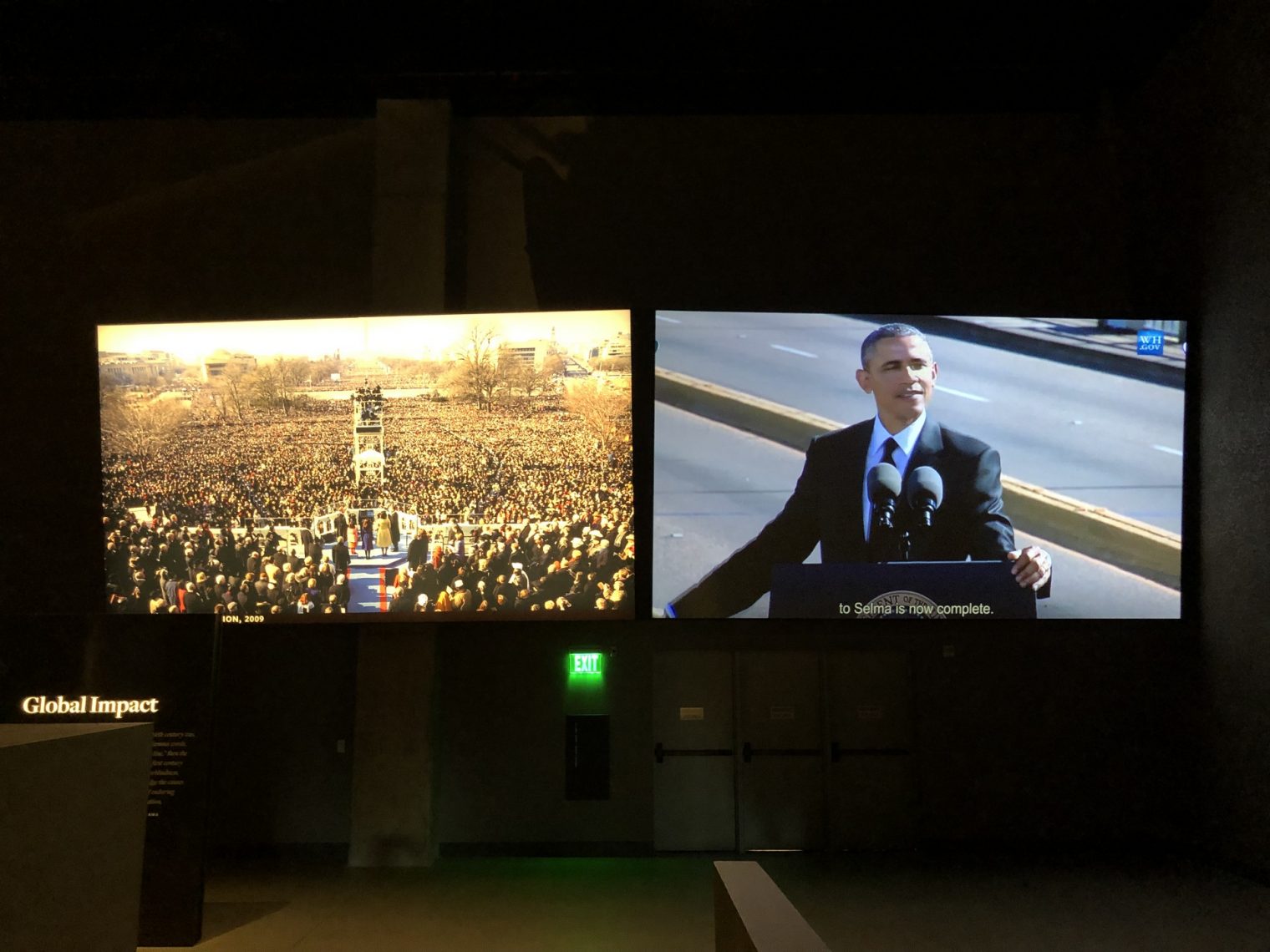
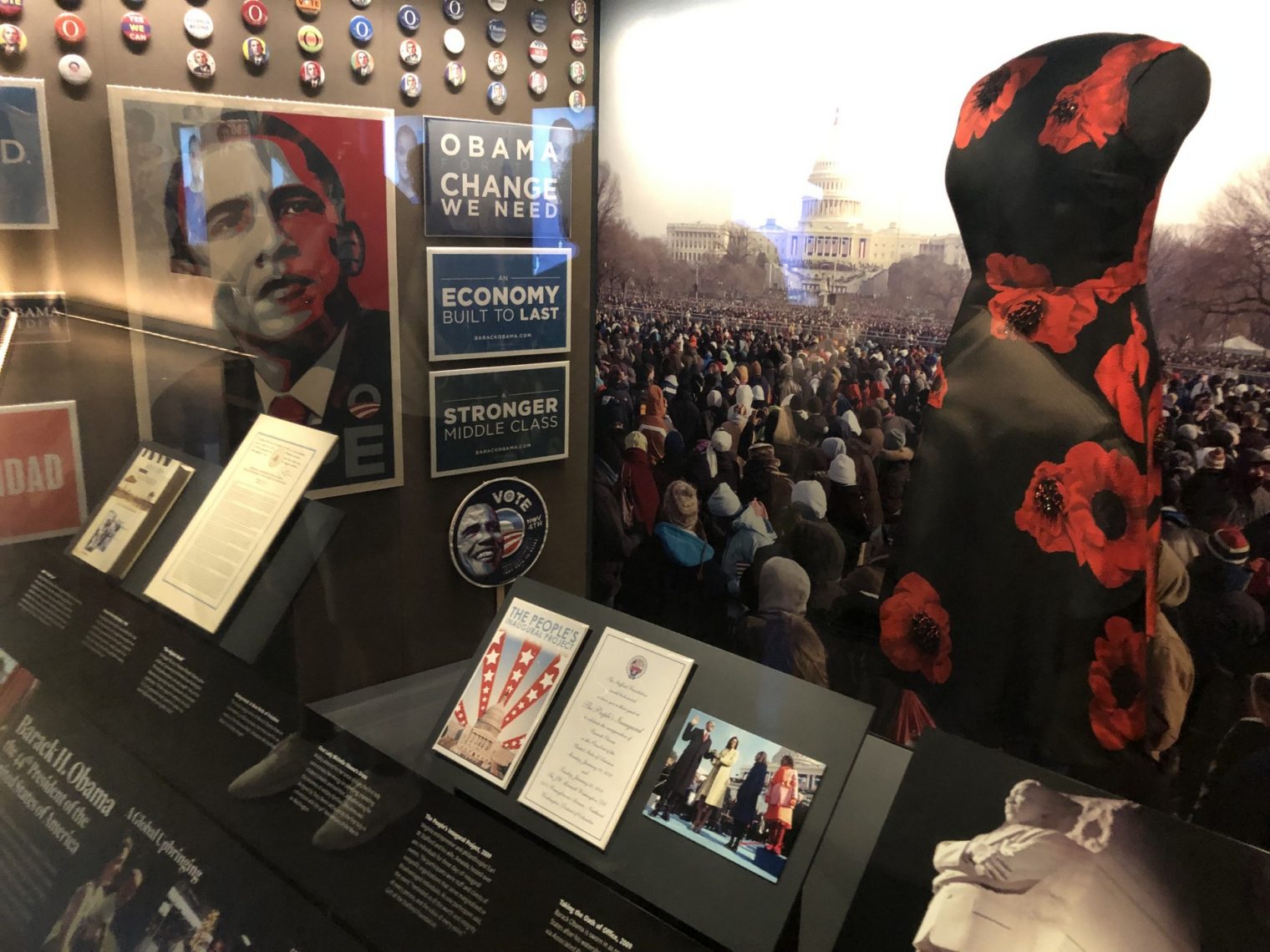
The shrine to Barack Obama, whose connection to formerly enslaved African Americans is never explained, continues in the bookstore:
A giftshop section “Because of Her Story” does not come close to tilting the scales in favor of women against Barack Obama:
(Unrelated, but fun:
)
Does black gay man beat black straight woman in the Victimhood Order of Hands? If so, the museum is ready:
African Americans are the group whose prosperity is most injured by low-skill immigration (Harvard study) and the museum notes that “Caribbean immigration increased 1,000 percent from 50 years earlier.”
(Result: lower wages, but some awesome calypso albums.)
The art museum part of the museum has some great pieces that are conventionally organized and presented:
The first African American to star in a TV drama is a challenge for the curators:
Fortunately, we will always have Oprah:

